#365days365movies
Text
Action January II: Captain Blood (1935)

Part One: By the Sword
Fun fact about me: I am a non-classically trained fencer.
By which I mean I went through formal training as a child (starting at 6 or 7), then continued it sporadically through my youth and college. Kept up with it a little after college, but I'm no longer a fencer. Still, it was a pretty prominent part of my life, and one of the more bougie facts about me (of which there are admittedly many; I am, for example, struggling to not type bourgeoisie). I look back on it fondly, but it's not for modern-day me.
Still, I've always had a soft spot for swashbucklers, especially in film. Sure, traditional épée fencing doesn't resemble your typical swashbuckling film fight, even a little bit. Usually, épée with the fencing gear is put in a movie or TV show to demonstrate that the character or establishment practicing it is high-class or rich. Instead, I suppose cinematic swashbuckling is more similar to sabre fencing, which has a larger target zone than épée fencing, and usually involves grander movements...but even then, I've never seen any sabre fencer swing from ropes and rafters like, well...

Zorro is a character that I've talked about before on this blog. I've also covered the swashbuckler briefly in that post, but let's get a little more comprehensive this time, shall we? Zorro is maybe the prototypical swashbuckler character, starting with Douglas Fairbanks' epic film The Mark of Zorro in 1920! Yeah, old as hell. He was daring, dashing, and debonair; dressed in black and fighting for justice to get the girl and save the day, armed with only a sword and his wit! The prototypical action hero! Throw in some great choreography and epic music, and voila! A swashbuckler! To put one together properly, we need:
A dashing hero, with devil-may-care attitude that fights for the moral right. If we're talking in DnD terms, you can call this person chaotic good alignment, usually. Swinging from the rafters, a sword in hand and often a smile on their face. And, of course, a romantic aim and goal.
Swordfighting. Kind of critical to the genre. Swashbucklers are films that use swordfights as the driver for the plot. While not every action sequence may involve a sword fight, the main hero is always either armed with their sword or looking for it. And then it's time for the climax, you better believe we've got a big-ass swordfight on our hands. The villain of the piece, at least one of them, should also have a sword in hand.
A sweeping score is a very typical piece of these films. Whether in the past or present, swashbuckling can't be done without an iconic leitmotif for the hero, and battle music times to the clashes of steel. Usually throw some brass or strings in there, and you have a swashbuckling score.
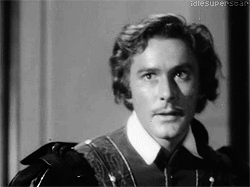
Now, of course, there are a lot of swashbucklers out there based on those definitions, and...yeah, there are a lot of swashbuckler films! While The Mark of Zorro is typically called the first swashbuckler, it's not the first film to involve narrative swordplay by any means. The Count of Monte Cristo (1908) is probably the first of those, but there are others like The Prisoner of Zenda or Kidnapped. You may also notice that some of the classic swashbucklers are based on classic literature, like those above, and like Cyrano de Bergerac, The Scarlet Pimpernel, The Man in the Iron Mask, and the most prominent of these...
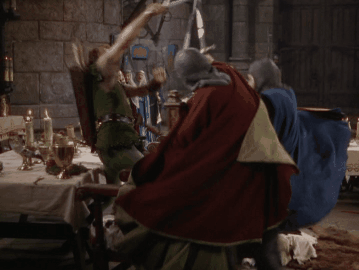
It's funny, for a character best known for his archery skills, Robin Hood gets into a lot of swordfights. Some of the most iconic filmed swordfights come from the emerald archer from Sherwood, and for good reason! There have been countless adaptations of the original stories, which are crazy cinematic, and they all take place in medieval England, during a time period where swords were predominant weaponry. Combine that with the fact that Robin Hood is, in many retellings, a nobleman who would've been trained in fencing, and you have a natural swashbuckler setup!
And honestly, Robin Hood is sort of the perfect swashbuckler. A morally good hero fighting against the evil establishment, for his friends, contrymen, and the woman he loves. Epic music, daring setpieces, classic fights, a lot of swingin' rafters...yeah, it's perfect. And again, one day, I'll talk about The Adventures of Robin Hood from 1938; one of my favorite action films, and my favorite adaptation of Robin Hood for sure.
But there's another type of swashbuckler that's just as iconic as those listed above, also involving a setting conducive to sword-based action, but often with heroes that are...a little more morally grey.
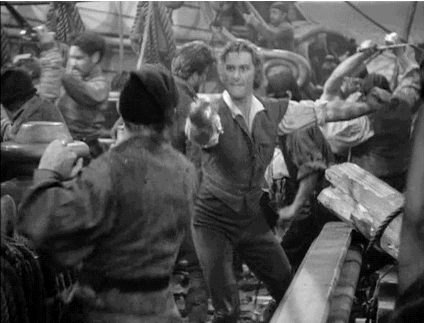
Pirate films are essentially a subgenre of the swashbuckler (yes, a subgenre of a subgenre of a subgenre), focusing on high-seas action rather than fighting in a hall or castle. The pirate film is a curious beast, appearing in film history in sporadic bursts, with no real period to call its own. They were popular from the '30s through the mid-'60s, had a tiny boom in the '80s, got badly nuked in the '90s, and then had another tiny boom in the '00s with the Pirates of the Caribbean franchise. They're always around, but never the first genre you'd think of when you think of action films.
Still, pirate films have an iconic feel to them all their own. The wind in your hair, the daring sword fights against a surly knave or an overzealous government stooge, depending on the nature of your morally dubious hero. Hell, maybe the hero has resorted to piracy after being wronged or lost at sea, and we're rooting for him and his lost honor. Either way, he's got an open shirt and a sword in his hand, and his crew are there to back him up (or betray him; again, depends on the narrative). You know a pirate film when you see one. And that's where I'm headed today: to the open seas with Captain Blood, starring an iconic action star of the 1930s and '40s. In fact, he's so iconic, almost every one of the above GIFs includes him.
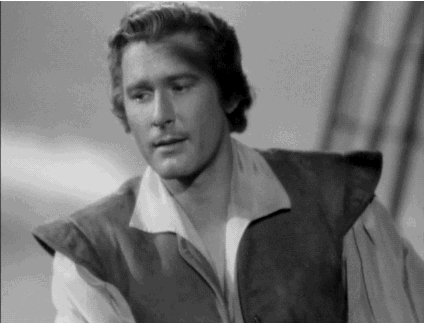
Errol Flynn is undoubtedly a major film figure of his day. He's also got a fascinating and...sometimes troubling personal history, putting him up there with some of the great Australian film actors in cinema. But as much as I'd like to talk about Errol Flynn (and I probably will later), I'd like to finally jump into the film that made him famous: Captain Blood, a 1935 film directed by Michael Curtiz, another interesting figure with some...interesting history with Flynn. Again, more later.
Flynn was an unknown before this role, and immediately became an audience and studio favorite, essentially succeeding Douglas Fairbanks as a films and action star. Only 26 at time this film came out, Captain Blood was the beginning of an often turbulent career for Flynn, who would die at only 50 years old. Again, more on him later. And so, without further ado...SPOILERS AHEAD!!!
Recap

It's 1685 in England, and there's a rebellion happening! Known as the Monmouth Rebellion, it involved the deposition of James II, after succeeding his brother as king of England, which was contested by Parliament and Protestants, as James II was a Catholic king. Anyway, during the rebellion, Doctor Peter Blood (Errol Flynn) is summoned to aid a friend injured in a skirmish. A retired adventurer and swashbuckler in his own right, Blood is determined not to re-enter the...fight...
Is this Commando? Like, where a retired hero is forced to come back to fight for his country, and won't come back until a personal tragedy or offense is done to him? You know, like Commando? Just calling it now, before it happens.
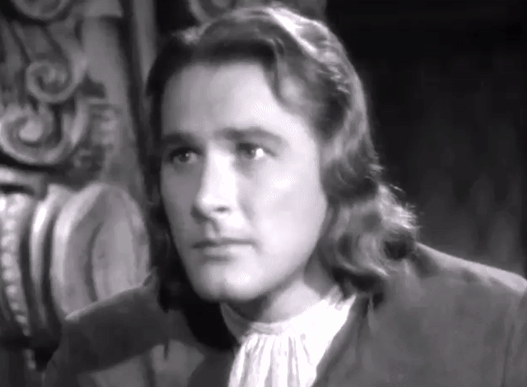
As Blood is helping his friend, he's taken away and sentenced by Judge George Jeffreys (Leonard Mudie), who accuses him of being a liar and traitor to the crown, despite his complete innocence. Imprisoned and set amongst a group of similar prisoners for months, he attempts to defend himself on the stand, only to condemn himself even further beneath a biased kangaroo court. And for the record, Flynn immediately proves why he's so beloved at this time. He's an excellent actor in this scene, and I immediately sympathize with Peter Blood.
Meanwhile, King James II (Vernon Steele) is convinced by his advisor to send the convicts to the West Indies as slaves, as actual slaves are too expensive, and these guys are free of cost. So, yeah, British monarchy not looking too great. In any case, we set to sea for the first time, in the belly of an unrealistically humane slave ship. In Blood's words, the King was "granted their lives in exchange of an uncertain death". And with that, Blood and the convicts are sent o Port Royal, in Jamaica.

The convicts are set for sale (hate it), and most of them are sold to Colonel Bishop (Lionel Atwill) and his niece, Arabella (Olivia de Havilland). When she observes Blood's rebellious nature at being inspected like cattle, she decides to keep him from working in the mines on her own spoiled whims. Blood's not a fan, and the two immediately clash. Which, obviously, means they're gonna fall in love by the end. Come on, we know how this goes.
Blood's sent to work on the plantation with Bishop's other slaves, on a grinding mill that loves like it's ripped out of Conan the Barbarian. We see the indignity of slavery through...white slaves. Yeah, trying not to think about it, since this is a thing that happened, but it's tough. Anyway, our traitors are taught a lesson about treason, as an escapee is branded on his fucking face, and the prisoners all say how much they hate the fucking King. Great job, James, really fanning the flames of patriotism there.
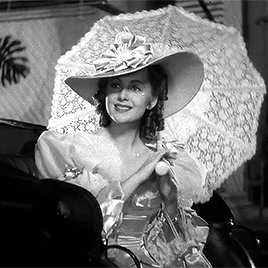
Meanwhile, the uncaring and selfish governor, Steed (George Hassell) is complaining of gout, and is in need of a physician. Knowing of Blood's former profession, Arabella recommends him as Steed's physician, and is mostly elevated from the role of slavery, which seems...insanely easy. Irritatingly easy, even. But whatever; at least he hasn't forgotten his friends, his actual station, or the fact that Arabella bought him for 10 goddamn shillings! He's still understandably bitter about that.
However, he's in very good favor with the governor for relieving his gout, unlike the previous doctors Bronson (Hobart Cavanaugh) and Whacker (Donald Meek), who attempt to plot to get rid of the much more competent Blood. He puts them in their place, but begins a plot of his own. With the other slaves arrested for treason, he plans an escape attempt from Port Royal, with the help of friend (and the guy who got him in this mess to begin with, Jeremy Pitt (Ross Alexander). However, in the process, Colonel Bishop suspects some kind of plan, which is only circumvented with the help of Arabella. In the process, however, Pitt is captured and flogged for questioning.
While his friend is getting horribly whipped by the Colonel on the stockades, Blood and Arabella flirt (as expected), although a kiss from Blood is received poorly due to his status, leaving the encounter on a sour note. Peter goes back to care for the Governor before their escape that night, then finds Jeremy at the stockades and cares for him as well. He's caught by the Colonel showing mercy, and is about to share Jeremy's fate when a ship attacks the port.
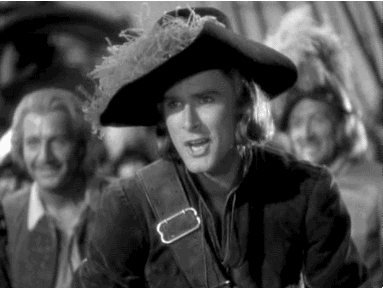
This ship belongs to the Spanish, and the sailors aboard lay waste to the port. It's at this point that the slaves see an opportunity, and make their way to the ships. They take over the Spaniard's ship, and wait until the morning to take out the returning Spaniard captain and soldiers. With navigator Pitt and new gunner Henry Hagthorpe (Guy Kibbee), the new crew sets sale and escapes, under the purview of the new Captain Blood.
Colonel Bishop, like...like a fucking idiot, sails out on a rowboat to thank the men, not realizing it's his own slaves. And then, when he finds out, he still intends to keep them as slaves. THEY HAVE A SHIP, DUDE! You're fucked. Instead of killing him, which they consider, they toss him overboard, and Blood's crew sets sail for the Caribbean Sea, leaving Arabella behind. They abandon their citizenship, and officially become pirates.

The crew of Blood becomes famed and infamous across the seas, to the irritation of King James II himself. With Governor Steed having lost both money from the Spaniard assault, and being unable to reign in Blood in the first place, his appointment as Governor is given to Colonel Bishop, who swears to take care of Blood once and for all. Arabella is conflicted about this, but she's shipped off to England along with Governor Steed.
On Tortuga, Blood signs a deal with another captain, the French Levasseur (Basil Rathbone), and the two become partner pirates. Later on, Arabella finishes her extended holiday in England, traveling alongside Lord Willoughby (Henry Stephenson), who has been tasked to take out Captain Blood. On their journey, they see Levasseur's ship, which attacks them and takes the passengers hostage on a nearby island. They are soon joined by a surprised Peter Blood and his crew, who pretends not to know her.
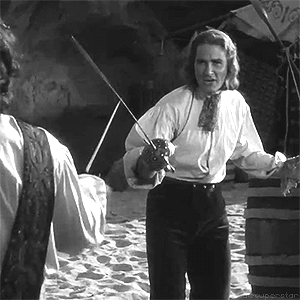
Blood and Levasseur engage in an argument, as one of the articles of their contract was that no female prisoners would be taken. As a compromise, Blood pays for her ransom, both to save her and as payback for his purchase of her many years ago. This still enrages Levasseur, who wanted Arabella for himself, and he forgoes his honor to challenge Blood to a fencing duel. Fun fact, by the way: Basil Rathbone was an actual fencer, classically trained, and far better than anyone he ever fenced with on-screen, Flynn included. But, since he always played the role of a villain and cad, he was always forced to lose. And this fight is no exception.
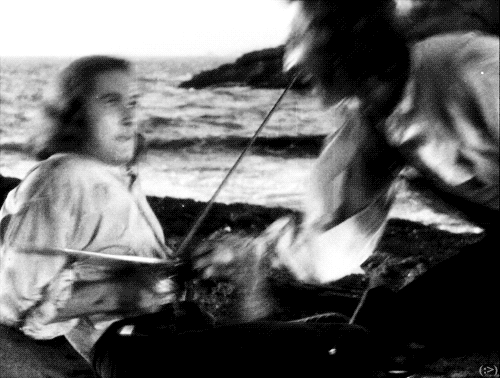
Levasseur is killed by Blood...which is crazy, since he's Basil fucking Rathbone, and he was in this movie for maybe 5 minutes altogether as essentially a cameo, but...c'est la vie, et la mort. Arabella and Willoughby are brought on board, only for Arabella to angrily reject him. And yes, she's absolutely a goddamn hypocrite, but she's not fully unjustified. She puts Blood down as a beast like any other pirate (unfairly, of course), and Blood angrily rebukes her in turn. Even then, he plans to bring the two hostages back to Port Royal, where they are certain to die.
Willoughby and Arabella speak, where he convinces her that Blood's genuinely not a dick, and tells her that they're headed to Port Royal. At the same time, Blood's crew refuses to sail to Port Royal, officially acting in mutiny against Blood. And Blood...gracefully surrenders his command of the ship, admitting his affections for Arabella to be driving him against logic. And that ironically turns the crew back to Blood's command. I can't tell if that was a sign of their actual bond, or some straight gatekeeping-girlbossing-gaslighting from Blood, but...yeah, they're still going to Jamaica.

As they approach Port Royal, though, they find it being attacked by two French ships. Willoughby, finally being able to speak with Blood, informs him that France and England are at war. To their surprise, though, Governor Bishop isn't present, nor is the English fleet, since they're out chasing pirates. And so, the only ship to defend Port Royal against the French, is...well, Blood's.
It's then that Willoughby finally reveals his purpose for seeking Blood and his crew: the King has pardoned him. Obviously, they're not a fan of King James II given what he'd done to them, and refuse the offer. But then, Willoughby reveals the other political change: James II is out as King. With that knowledge, Blood and his men decide to fight for the English Navy, and for the new King William III.
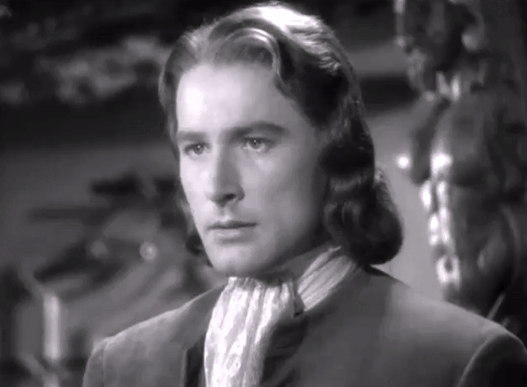
Arabella is shuttled ashore, while the ship sails under a French flag to disguise themselves. They easily ambush the French ships attacking the Port, wrecking one and causing it to fucking explode. Honestly, it's pretty sick. The other ship mounts a harsher assault, and Blood's crew is forced to abandon ship. Instead, they simply take the French ship for themselves. And as the Captain swings over, you realize something: this is the prototypical pirate movie.
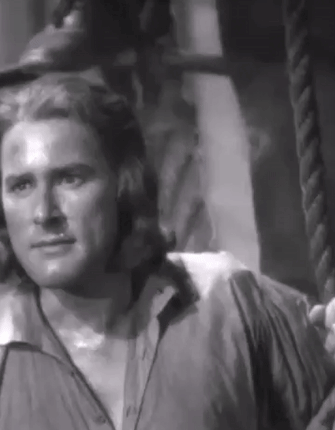
Yeah, OK, earlier films like The Black Pirate, as well as later ones like The Sea Hawk and Treasure Island, would be a major framework for pirate films in the future. But good goddamn, if this doesn't feel like a pirate movie, I don't know what does. The score is sweeping, the action is epic, and it's honestly just fun. And the most ironic thing is, this is happening at the point in the film when they aren't technically pirates anymore! Hilarious.
Anyway, Blood's crew wins the day for England, only for the Governor to finally return from his futile journey. Arabella, seeing Blood return and knowing her uncle's hatred of him, tries to warn him away while admitting her love to him. But to the surprise of her and her uncle, Bishop is officially deposed as Governor for abandoning his post in times of war to pursue his vendetta, even though he knew Willoughby was coming. He's at the mercy of the new Governor: Doctor Peter Blood. Honestly, it's funny as fuck. Blood bids him "Good morning, Uncle.", and the film comes to a close.
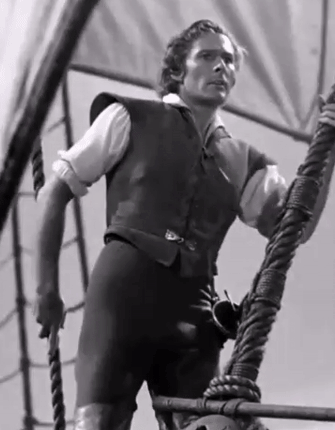
That's it for Captain Blood! Gonna do an old-fashioned review set-up and have a separate post for the Review! And that's because, while the review won't be terribly long...I would really like to talk about the man, the myth, the alcoholic legend himself, Errol Flynn.
See you in the Review!
#user365#365 days 365 movies#365 movies 365 days#365days365movies#365 movie challenge#365 movies a year#action january#action#action movie#swashbuckling#pirate movie#pirates#captain blood#michael curtiz#errol flynn#olivia de havilland#basil rathbone#action genre
8 notes
·
View notes
Text
Well...this is a surprise!
So, I was tagged by @thefeastandthefast, which was a surprise! Thank you, I’ve never participated in one of these before, so this should be interesting! Here goes, then.
Last song: Touch the Sky, by Julie Fowls, from the Brave soundtrack. I’m about to play in a DnD game, playing a character with a Scottish accent, so I needed to get in the mood, and try to get the accent down as best as I could. So, been listening to this song, which is also my character’s leitmotif. Weren’t expecting something that nerdy, were you? Well...maybe you were, but still.
Last movie: The Holy Mountain, dir. Alejandro Jodorowsky. If you’ve never seen it...dear Lord. It’s uh...it’s a movie. It’s a goddamn movie. Not to be a shill, but here’s my Recap of the film (Part 1 | Part 2 | Review), from my sideblog @365days365movies. Check it out, if you’re interested! #alwaysbeplugging
Currently reading: Oof, not much in the way of actual real-world books, sadly. Last one was honestly Shit, Actually, by Lindy West. I’ve talked about it before, and it’s a fun read. Basically a collection of humorous and satirical film essays. If anyone has any suggestions for more reading material, I’ll take it!
Currently watching: Literally watched The Falcon and the Winter Soldier’s first episode this morning, and I liked it...but it doesn’t have me yet, if you know what I mean. Might’ve been a little overhyped for it, and WandaVision’s first episodes definitely spoiled me for a gripping opening, so...we’ll see. It was good, though, don’t get me wrong. I’m also always watching something, so this is a harder question to narrow down, but that was the one that came to mind, and the most recent series that I watched.
Currently craving: Movie theatre popcorn. And I don’t mean the PopSecret microwave stuff, I mean REAL movie theatre popcorn. Guuuuuh. So goddamn good. Also, movie theatres in general, obviously. Also, visiting New York City and Boston, DisneyWorld (although, that’s a regular occurrence, let’s be honest), some water (also a regular occurrence, but that’s biological), and...weirdly, a Shamrock Shake. OH, and Girl Scout Cookies. I WANT MY GODDAMN DO-SI-DOS AND TAGALAONGS
OK, cool! And, I guess I have to tag some people. Haven’t made that many connections on here as of yet, but what the hell? I’ll give it a shot. Sorry if you’ve already done this before, I genuinely don’t know many people on here as of yet!
Tagging @howl-osullivan @spandexinspace @estellaestella @rubynye @heynattyice @scarecrow1973
11 notes
·
View notes
Text
Shoot ‘Em Up (2007) - 22/365

This is one I wanted to see when it originally came out but never got around to it. I haven’t heard much about it since then. After almost 11 years, I finally got a chance to see it. I can’t say that it was worth the wait.
I like the idea of the movie. Cartoonish violence, action, and gunplay. I liked Wanted, and this seemed like it would be a similar movie. It sorta was, but without the being a relatively good movie part.
I like Clive Owen’s and Monica Belluci’s characters and acting in the film. I like Paul Giamatti in some things, but here he’s really hamming it up and chewing the scenery. Perhaps that was the goal, but for some reason it did not work for me.
There are some cool moments here and there. The shootout in the sky towards the end of the film was really cool.
It also was just a visually ugly movie. I would wager a guess that this was in the early-ish days of shooting movies on digital. Everything looks very drab and it seems like they added a grainy look in post production in hopes that it would make it look cool or like a dark, gritty movie. It did not, it just made it look bad.
It wasn’t the worst I’ve ever seen, but I can’t recommend Shoot ‘Em Up.
Rating: **/***** 2 out of 5 stars
0 notes
Text
Action January: Omnibus
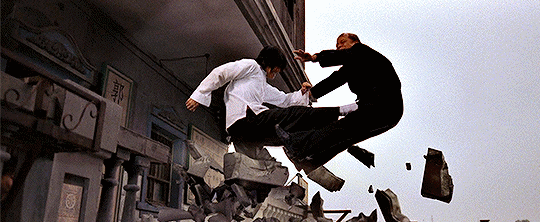
As I prepare for the future of this blog (and there is a future, if anybody's wondering), I find myself looking back at the good times, when I had the time to watch a movie a day and write a blog about it, which...yeah, wasn't even sustainable for me in 2021, so make of that what you will. ANYWAY, I decided that I would bring all of these posts together in an omnibus of sorts, so anybody that wanted to read these posts could find them all easily in one place. This, alongside other archives, are going to be pinned to the top of my page, and will serve as a long index of the films in the appropriate genres. The goal? To extend these archives as I go along, and have this running index for my blog. And again...there will be additions...
SO! With that, feel free to check out these films in the action genre, which remains one of my favorites! Any films you'd like to see in this list? Comment, reblog, message me, whatever! I'm always open to suggestions to add to my ever-building master list. And check out the other indices to come!
Introduction to Action (2021)

Top Gun (1986; dir. Tony Scott) (Part I | Part II | Review)
Mission Impossible (1996; dir. Brian De Palma) (Part I | Part II | Review)
Cliffhanger (1993; dir. Renny Harlin) (Recap | Review)
First Blood (1982; dir. Ted Kotcheff) (Part I | Part II | Review)
The Running Man (1987; dir. Paul Michael Glaser) (Part I | Part II | Review)
Last Action Hero (1993; dir. John McTiernan) (Part I | Part II | Review)
The Nice Guys (2016; dir. Shane Black) (Part I | Part II | Review)
R.E.D. (2010; dir. Robert Schwentke) (Recap | Review)
Kung Fu Hustle (2004; dir. Stephen Chow) (Part I | Part II | Review)
Enter the Dragon (1973; dir. Robert Clouse) (Recap | Review)

Come Drink with Me (1966; dir. King Hu) (Recap | Review)
Crouching Tiger, Hidden Dragon (2000; dir. Ang Lee) (Part I | Part II | Review)
House of Flying Daggers (2004; dir. Zhang Yimou) (Recap | Review)
GoldenEye (1995; dir. Martin Campbell) (Part I | Part II | Review)
Casino Royale (2006; dir. Martin Campbell) (Part I | Part II | Review)
Kingsman: The Secret Service (2014; dir. Matthew Vaughn) (Recap | Review)
Atomic Blonde (2017; dir. David Leitch) (Part I | Part II | Review)
The Mask of Zorro (1998; dir. Johnston McCulley) (Recap | Review)
Léon: The Professional (1994; dir. Luc Besson) (Part I | Part II | Review)
Taken (2006; dir. Luc Besson) (Recap | Review)

The Wages of Fear (1953; dir. Henri-Georges Clouzot) (Recap | Review)
Drive (2011; dir. Nicholas Winding Refn) (Recap | Review)
The Fast and the Furious (2001; dir. Rob Cohen) (Recap | Review)
Speed Racer (2008; dir. The Wachowskis) (Part I | Part II | Review)
The Poseidon Adventure (1972; dir. Ronald Neame) (Recap | Review)
The Expendables (2010; dir. Sylvester Stallone) (Recap | Review)
The Raid: Redemption (2011; dir. Gareth Evans) (Recap | Review)
The Fugitive (1993; dir. Andrew Davis) (Part I | Part II | Review)
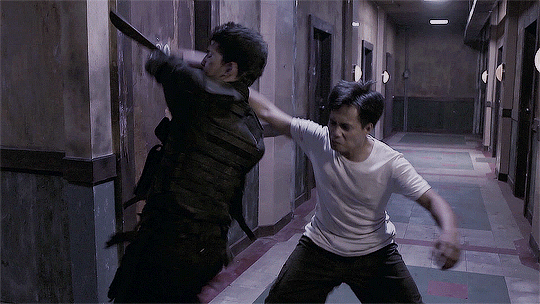
Mad Max (1979; dir. George Miller) (Recap)
Mad Max 2: The Road Warrior (1981; dir. George Miller) (Recap)
Mad Mad Beyond the Thunderdome (1985; dir. George Miller and George Ogilvie) (Recap)
The Mad Max Franchise (Reviews)

Action January: Summary (2021)
#user365#365 days 365 novies#365days365movies#365 movie challenge#action january#action films#action movies#action genre#action#movie review#movie recap#post archive#top gun#mad max#crouching tiger hidden dragon#drive#the fast and the furious#wuxia
3 notes
·
View notes
Text
Action January II: Captain Blood (1935)
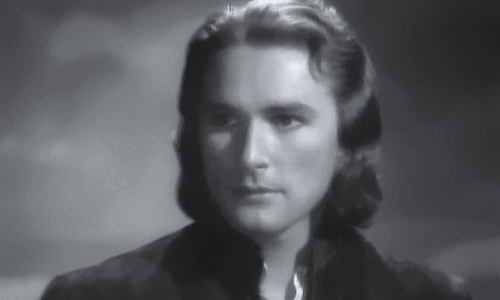
Part Two: A Colorful Fragment in a Drab World
When you think of the Golden Age of Hollywood, it's hard to get more notable than Errol Leslie Thomson Flynn at the height of his career. One of the most prominent leading men of the time period, succeeding Douglas Fairbanks and alongside Clark Gable, he was a mountebank of talent and action. At least...that was a public image of his. The actual Errol Flynn? Genuinely a drunken disease-ridden criminal who maybe exemplifies the idea of dividing the art from the artist. 'Cause, uh...wow. Not a good person, was Flynn.
If you do not care about Errol Flynn, skip to the break; I'll put my five-point review down there so time isn't wasted. I just really want to talk about Errol Flynn. Ready? OK.

Born in Hobart, Tasmania on June 20, 1909, Errol Flynn grew up in a middle class household. His father was a biology professor, while his mother was...well, in his autobiography, Flynn would say that she had "an itch to live - perhaps too much like my own." And given what we know about Errol's "itches", that's saying something. There's some speculation that she was sleeping with a local movie theater manager,leading to Flynn hanging out there often and watching a lot of movies. Is that true? Well, Flynn is a...somewhat unreliable narrator, so take his statements with a grain of salt. He also claimed that he and his mother were descended from some of the soldiers that participated in the famous mutiny on The Bounty, but that's probably not true. However, keep that factoid in mind for later.
Early life was complicated for Flynn, and bad habits emerged early. By the time he was 17, he'd been expelled from 4 schools for inappropriate acts (of violent and sexual natures); he'd joined a local gang; he'd already started his collection of sexually-transmitted diseases with gonorrhea (and he was, uh, quite the collector); and he was working in New Guinea. In New Guinea, he...um...

OK, look here's what you gotta know about Flynn: dude is nasty, in a lot of ways. Most of those ways are, unfortunately, sexual in nature. Since I'd like to be sensitive to the sensibilities of readers, I won't go into every nitty gritty detail. So, starting with his New Guinea adventures, let's just say that he killed a number of native people during colonization efforts, and then did that other classic thing that colonizers have done, historically. You know, that thing that goes with pillaging?
And to be clear, Flynn wasn't ashamed of this. In his autobiography, My Wicked, Wicked Ways, he describes one of the native New Guineans he encounters in...very unfortunate detail. Flynn was a nasty kid, before and after his acting career began. Speaking of which, while he was working in Australia (after fleeing from New Guinea for murder, etc.), he was spotted by director Charles Chauvel, and was offered to be in a film about the mutiny on the Bounty. Crazy coincidence, huh? Errol accepted, and that was his first film, In the Wake of the Bounty, in 1933. It's now disappeared into obscurity, but that was the beginning.

Flynn's career began mostly in the UK, where he acted as extras while getting professional training. Then he threw a stage manager down a flight of stairs and was fired from his repertory company. Because that's Errol Flynn, apparently. He worked on a few more films, married actress Lili Damita, and eventually got the attention of Hollywood. After a couple of small roles, Michael Curtiz tapped him as a 4th choice for his new movie, Captain Blood. Not only was this the first film with Curtiz and Olivia de Havilland (19 at the time), but it was a smash hit. Flynn was a star, the new Douglas Fairbanks!
1936: he works with Curtiz and Olivia again in The Charge of the Light Brigade. 1937: A dramatic role in Green Light, then another swashbuckler in The Prince and the Pauper, a melodrama in Another Dawn, and a comedy in The Perfect Specimen (with Curtiz again), all before acting as a war correspondent during the Spanish Civil War. And then, finally, in 1938, he reunites with Curtiz, Havilland, and Basil Rathbone in my favorite of his films: The Adventures of Robin Hood. And if Flynn was famous before, then that movie really did it.

In the meantime, he gets married to actress Lili Damita in 1935, and this would be the first of 3 marriages. And lemme tell you, it would end tragically for Flynn, hilariously for everybody else. From 1935 to 1939, Flynn's career would take off, and he would work with Curtiz and Havilland a few more times, but things would start to change at this point. See, starting all the way back in The Charge of the Light Brigade, Curtiz and Flynn had regular disagreements. In that film, 25 horses actually died under Curtiz' direction, and the animal-loving Flynn got into a legit fist-fight with his director. And this was the second of seven collaborations together. The two hated each other, but they knew good filmmaking when they saw it. Curtiz' career, by the way, includes Casablanca, just so you know what caliber of director we're talking about.
Flynn's career continued, as did his contentious nature. The Sea Hawk in 1940 continued his career climb, as World War II was in full swing. At the same time, he got badly slapped by co-star Bette Davis (yes, THAT Bette Davis) in the face in The Privates Lives of Elizabeth and Essex during an argument in a scene, which he wrote off as "unrequited romantic interest" (ugh); he had more arguments with Curtiz on Virginia City in 1940, and tried to get him off his own picture; and he co-starred with no-name actor Ronald Reagan in Santa Fe Trail, which is probably the only notable thing that dude ever did.
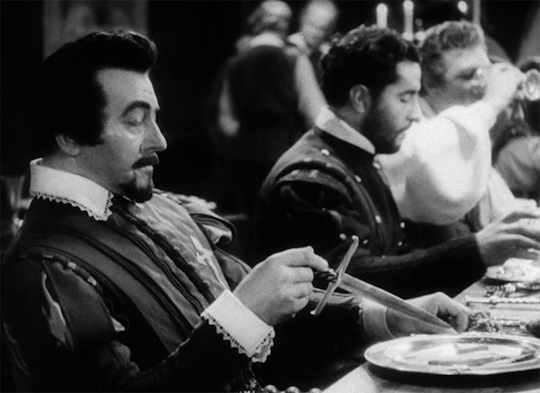
And this, of course, is when the health problems and drinking started. He'd contracted malaria when he was younger in New Guinea, which damaged his heart significantly. And oh, God, the drinking. Flynn was a notorious womanizing, chain-smoking drunk, especially throughout the 1940s. He'd had affairs with everybody (a habit so famous, it's the origin for the phrase "in like Flynn"), and would regularly get into physical fights with everyone else. In the process, he would greatly expand his collection of diseases. By 1942, he had chronic tuberculosis, recurrent malaria, gonorrhea, syphillis, and a host of unrecorded STDs. This, combined with heart damage and back pain, made him ineligible for service during World War II, which had many believing he was a draft dodger (since studios didn't want word of their big star having that many STDs). And that's not all!
See, Lili's getting sick of the whole "constant cheating and STD" thing, so she files for divorce. Said divorce had insane conditions by today's standards, and would essentially had Lili rolling in Errol's money FOR LIFE, while leaving Errol with far less money for the rest of his days. How could this get worse? Easy; he was being sued for statutory r*pe that year as well, and nearly resulted in a 25-year prison sentence. He was acquitted, because Hollywood's always been bullshit, but his reputation was...well, frankly, it was fucked. And at this point, Flynn was only 33 years old. Jesus Christ.

After this, Flynn would never fully recover. Oh, he was still in movies, but his drinking and partying continued, and his reputation somehow got even worse. He would show up blasted to sets, ending his relationships with many directors. His appearance started taking a nosedive due to his health and behaviors. He got married again, in 1943 to Nora Eddington, somehow, but Nora later regretted that marriage. Scandals continued, like the time newspapers found out he'd installed one-way mirrors in his mansion's bathrooms in order to look at his female guests secretly (ew. EW.), and he added hepatitis to his collection of diseases.
Marriage #3 comes along in 1950, and Flynn moves to Europe in 1954 for his films. He's there for a few years, until finally getting a call back in 1957 to star in an adaptation of Hemingway's The Sun Also Rises. Flynn idolized Hemingway, and actually wanted to be an author just like him. Might have accomplished it, if not for the EVERYTHING ELSE he was doing. Still, he accepted the role, which cast him as a pathetic drunk has-been, past his years and prime. What I'm trying to say is, he crushed it. Hard.
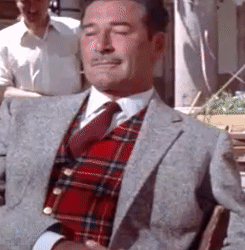
Flynn's back, baby! And now, he's being typecast as a drunk. Which, again, is what he was at this point. Also, I should clarify, alcoholism is absolutely a disease, and my issues with Flynn have nothing to do with the fact that he was an alcoholic. However, he was constantly drunk, that's just a fact. His success in The Sun Also Rises revitalized his career in the late 1950s, and things were looking good. He even started up his old journalism ambitions when he traveled to Cuba during Castro's revolution, and was the only journalist there when Castro won.
In 1959, though, Flynn's financial difficulties had become too much, even with his career rebirth. He went to Canada to sell a yacht to a guy, then flew back to Los Angeles on October 14. In the process, his back and legs started acting up. Not unusual for him. The doctor in LA noted that Flynn could barely walk up the stairs, then gave him some Demerol, a massage, and good conversation. Flynn said he "felt ever so much better", and the doctor left. A 17-year-old girl that had been traveling with him (yeah, that sounds horrible) went in to check on him 20 minutes later.

Errol Flynn died on October 14, 1959, at the age of 50. His cause of death was found as a heart attack from coronary thrombosis, atherosclerosis, and severe cirrhosis of the liver, amongst the STDs that plagued him his entire life. Flynn was buried with six bottles of his favorite whiskey at Forest Lawn Memorial Park Cemetery in Glendale, California. He had once said he hated this place, and never wanted to be buried there, so you gotta imagine that his current marriage wasn't going great either. Jesus.
But even after he died, Flynn's legacy continued to degrade. His autobiography came out, which didn't really help him image much. His work as a war correspondent was put into question as illegitimate, and thought to be used only to promote his films. That 17 year old that discovered his death revealed that yes, that sentence was as creepy as it sounded, and Flynn never learned his FUCKING LESSION. He was also possibly outed as bisexual, which is obviously fine (assuming the bisexual community wants to claim this asshole at all), and I only point this out to say that he was described as "super-straight" by Iron Eyes Cody. And who's Iron Eyes Cody? Trust me. Look him up. You don't wanna trust a goddamn word that dude said.

So, with all of that bullshit said and finally done...Errol Flynn was still an excellent actor. Yeah, I honestly mean that. IN fact, I'll elaborate in a minute here in the review below. So, read on if you're interested in that. And if not, honestly, watch Captain Blood and The Adventures of Robin Hood yourself, and make your own opinions. Just saying, he could act. Separate the art from the artist, people.
Review
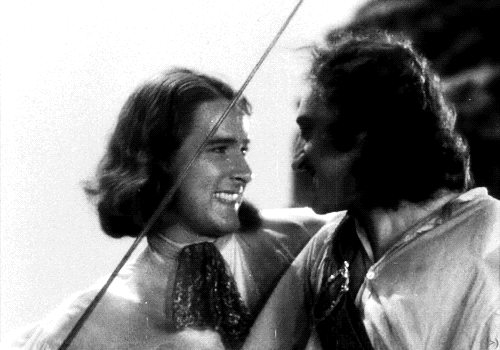
Cast and Acting: 9/10
Just to get our leading man out of the way, Errol Flynn is fantastic in this movie. I mean it; for a guy who'd barely been in movies, and for this being his first leading role, he knocks it out of the park. Suave and debonair, defiant and headstrong when he needs to be, and someone you're charmed by as much as the characters on screen are. Plus, the swashbuckling is fun to watch, and credit should go to Flynn for some of that. Genuinely a star in the making; just forget all that other stuff from above, OK?
And everybody else? Olivia de Havilland, who's only 18 during filming, by the way, is also great in this movie. And again, this is one of her first films. Crazy, huh? Her role is uncomplicated, but she plays it very well! Basil Rathbone isn't in here for long, but he's a scene-stealer...partially because his French accent feels forced, and he's maybe a little over the top. Still, extremely fun to watch. Same could be said for Lionel Atwill, although he sort-of just drops off in the middle of the picture, when he could've been a real commanding antagonist. Missed opportunity, that one. As for the pirate crew, like Ross Alexander and Guy Kibbee, they're not bad! Meant in some cases to be comic relief, which is done well, but also portrayed as a loyal and faithful crew. Throw all of these performances together, and you get my final score. Solid all around, with a little scenery-chewing here and there.
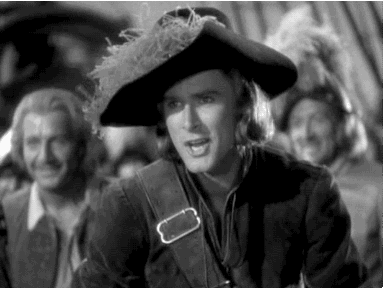
Plot and Writing: 8/10
Honestly, this is both a standard swashbuckling plot (man of high-standing gets plunged into low-standing, then fights his way back to prowess via sword and fisticuffs), but also very different in some ways. It's based off of a novel by Rafael Sabatini, and certainly has a memorable and easy to describe story. However...and this is a soft however...Blood's gonna win. It's not the least predictable plot in the world, since you know Blood's gonna win and get the girl in the end. It also has a surprisingly bloodless ending, all things considered. Yeah, I know there's the battle with the French in the end there, but only one named cast member (Basil Rathbone) actually dies. It's fun to watch and easy to recall, but...kinda toothless in the end. Also, Blood is a bit of a Gary Stu most of the time, which isn't the best character work you can do.
Writing by Casey Robinson, though, is still fantastic. This is a SOLID adaptation of the book, from what I can tell, and Robinson manages to spice up a standard plot with some entertaining and engaging writing throughout. Honestly, this is a fun movie, and the writing helps with that quite a bit. Even got the Oscar nomination that year for Best Screenplay, but lost to The Informer. In fact, it technically wasn't officially nominated by the committee, but was instead nominated by write-in. That is how popular this film's writing was.
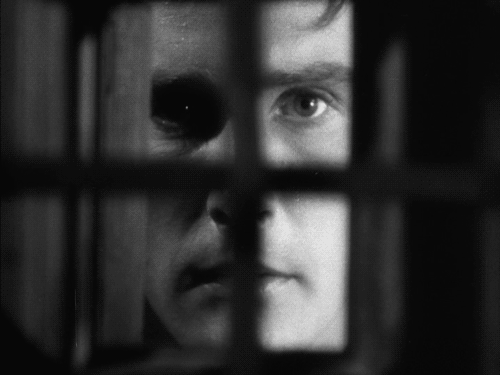
Direction and Cinematography: 9/10
Michael Curtiz, frankly, is a legend. And sure, I can't say this is a groundbreaking film in terms of direction in some ways, but good goddamn, does Curtiz still do an excellent job. This is especially notable when looking at the action scenes, like the beach swordfight, or the siege on the French ships (as seen in the GIF below). Seriously, though, this is a great-looking film, both due to legendary director and legendary cinematographers Ernest Haller and Hal Mohr. The former is best known for Gone With the Wind (I hate that movie, but it's admittedly gorgeously shot), while the latter is known for The Phantom of the Opera and...The Jazz Singer. Ooh. Yikes. Moving on!

Production and Set Design: 9/10
Again, kind of standard fare for the time period in some ways, but still a great looking production! You feel like you're on a ship or tropical island for most of the film, despite the entire film being made in California. That ending scene with the French ships? 2,500 extras were in that sequence, making it one of the biggest films ever made at that time. This is impressive production, including the prop work and...well, OK, one problem. The costumes are mildly anachronistic. It's nothing crazy, but keep in mind that this film is meant to take place in the 1650s. With that in mind, this feels far more like a film from the 1800s instead. This is a minor nitpick, but a nitpick nonetheless. Frankly, I've really had to try and find flaws with some of this stuff, because this film is genuinely great.

Music and Editing: 9/10
Music here is by Erich Wolfgang Korngold, another film legend and notable composer. His career very much followed Errol Flynn, as this was his first huge picture (not counting 1933's A Midsummer Night's Dream), and he would also score for The Adventures of Robin Hood, The Sea Hawk, and The Private Lives of Elizabeth and Essex. This booming brass score is your stereotypical swashbuckler tune, meaning that Korngold helped create that stereotype in the first place. It's iconic, it's memorable, and it makes for solid background in a action scene. Even did that thing where the sword-clashes are timed with music sometimes! Again, classic.
George Amy is our editor for this picture, and he's a legend in his own right. A powerhouse for Warner Brothers, Amy was a favorite of Michael Curtiz, and ended up editing the majority of his films (but not Casablanca, funnily enough). He definitely does well here, although I felt like one or two sequences could use a little trim here and there. Nothing really felt unnecessary, but there could have been a little something different in the near-mutiny sequence, for example. That sequence is maybe the weirdest in the film for me, as Blood sort-of gaslights the crew into following him into certain fucking death. Again, kind of a nitpick for me, but it did affect how I saw Blood, and maybe could've been changed to adjust the pacing of the scene.
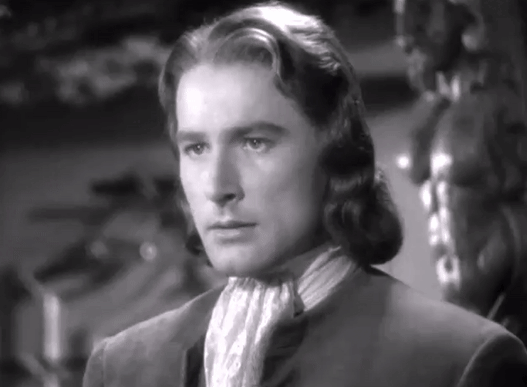
Verdict: 88%
Pretty sure I've hurt some critic's feelings with that number, so I feel the need to clarify something: this movie's goddamn great. It's the progenitor of the swashbuckling genre for a reason, after all. This is a crazy fun film, but I won't give it an excuse because it's a classic. But would I watch this movie again? Absolutely. Like I said, a hell of a lot of fun.
Time for another classic action-adventure movie to continue the classics train, but let's jump forward a decade for this one, huh? Post World War II, classic director, and a precursor to the true action genre. And as always, one that's been on my list for a long time.

Next: The Treasure of the Sierra Madre (1948);
dir. John Huston
#user365#365 days 365 movies#365 movie challenge#365 movies 365 days#365 movies a year#365days365movies#action january#action#swashbuckling#action movie#pirate movie#errol flynn#captain blood#michael curtiz#olivia de havilland#basil rathbone#biography#action genre
3 notes
·
View notes
Text
January 1, 2024: The Great Train Robbery (1903)
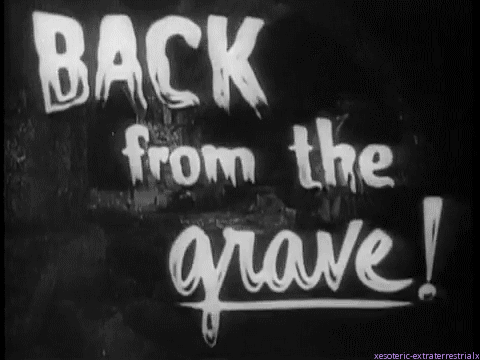
I LIIIIIIIIIIIIIIIVE
So. It's been a while. Life has been busy for the last couple of years, lemme tell you. I love this blog and I love movies, but writing can be...time-consuming for me. Anyway, I figure, why not start this whole thing over again, huh? Well, mostly. Am I gonna get to 365 movies this year? Frankly, that's unlikely, for a number of reasons. BUT! I can at least start small. And, since doing action films in January is a bit of a blast from the past...why not go all the way back this time? Plus, hey - it's a good way for me to get back into the swing of things.
Film history time!

Without going too far into it, the modern film industry began in the 1890s. The first moving pictures were mostly short documentaries, showing live as captured through multiple successive images. L'arrivée d'un train en gare de La Ciotat is often called the first film publicly shown, but that's a misconception. What is true, however, is that the film was made by two luminaries in film history: the Lumiere brothers. Their invention, the cinématographe, was essentially an early film camera, and the brothers used it to document real life.
However, for every good 19th century inventor, there's got to be a rival. And honestly, when you're talking about the 1890s, there's only one real rival to speak of for a given inventor: the Wizard of Menlo Park.
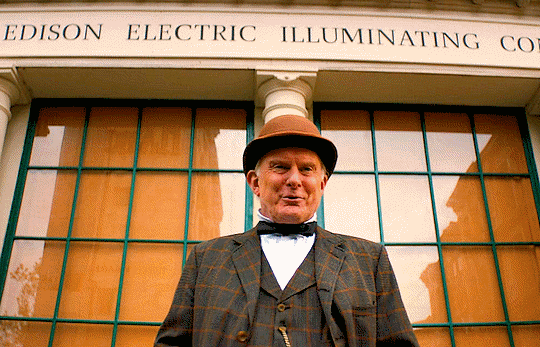
Edison, of course, is legendarily one of the biggest assholes in American history. However, to his credit, the man was genuinely brilliant. Coming up with or perfecting various contraptions and inventions, Edison was a dynamo. In 1889, he had the idea for a device that could capture and display visuals to accompany sounds from the phonograph (which he'd, of course, invented). He had a member of his think tank, William Kennedy Dickson, develop the device, and they created their own early video camera of sorts. With the combination of these two teams, amongst others here and there, the first films began distribution around 1893.
However, again, these were mostly capturing real-life footage. The first narrative films began around 1896, likely with La Fée aux Choux in that year. A minute-long film, this is arguably the first non-documentary to be produced, and would be the first of a new industry. And, fun fact, the first film to be directed by a woman, Alice Guy! After this, the Edison Manufacturing Company released the first commercially available film, The Kiss, and made buckets of cash. The film industry is born.
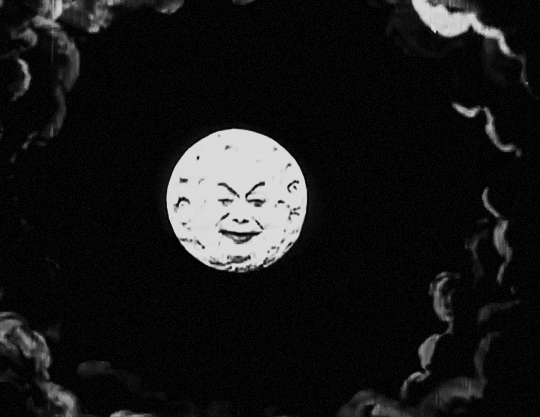
But to really hit the head on narrative film, you have to go back to France. There, illusionist Marie-Georges-Jean Méliès expanded the genre with creative sets and productions that took film into the realm of the fantastic. Inventing a number of basic tricks like dissolves and multiple exposures, Georges is the true pioneer of early film. His 1902 film, Le Voyage Dans La Lune (you know, the one where they land a ship in the Moon's eye) is considered a classic to this day, amongst other Méliès staples like Cendrillon and Le Manoir du Diable.
However, Georges isn't alone. The UK has a slew of filmakers entering the scene with their own efforts, while in the US, Edison's company is continuing their work as well. Most prominently for this story, perhaps, is the work of one of Edison's early cameramen, and therefore one of his first directors, Edwin S. Porter. Porter started with Edison in 1901, and was one of the first real film scholars. Taking from the other prominent directors of the day, he injected craft into the films he worked on for the company. At this point, one of the big things in American cinema was the brand new Western genre.

This is the point to clear up a bit of a misconception about Western films: The Great Train Robbery was in no way the first one. OK, so, the Western has its origins in Wild West shows, like Buffalo Bill's Wild West, which would travel around the world to show off the adventure and action of the American West. In fact, that GIF up above is Annie Oakley, who was filmed by Edison's Kinetoscope as an early film doing her sharpshooting act, which was a part of the show! Anyway, these exhibitions also traveled to the UK, where they made a massive impact. America was the land of the Wild West, and it arguably wouldn't shake that image until around World War II.
Because of this, the first Western films were actually filmed in England, not the United States! The first was Kidnapping by Indians in 1899, followed by A Daring Daylight Burglary in 1903. That film in particular inspired Potter, alongside an 1896 play called The Great Train Robbery, to make...well, you read the title of the review. That film is sometimes called the first Western film by mistake, but is usually forgotten in favor of Porter's film. In any case, though, the Western genre was born in the silent film era.
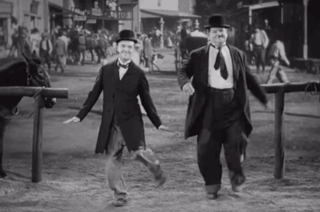
From that point, of course, history is made. Stars like Tom Mix, John Wayne, and Jay Silverheels make their way into the public zeitgeist. Characters like Bronco Billy, or the Lone Ranger and Tonto become household names. Classic films like Stagecoach and more bring the genre to new heights, while even comedians like Laurel and Hardy (above) get into the game with Way Out West. Even actual Western figures like Wyatt Earp became a part of the industry briefly, consulting on how things were in those wild days. It was a new dawn for film, and a unique era.
Of course, I've talked about Westerns before. Didn't get to cover much that month, but I covered a few films like Stagecoach. I even got some facts wrong in that recap about the first Western! Go figure. Anyway, that's a brief history of the Western film genre up to this point. But why cover this now? Well, this is also, for all intents and purposes, one of the first action films in cinema history. Ironically, the idea of action on screen would kick off an entirely different genre. Rather than spinning off into the Western, which became its own thing, the first iteration of the action genre was the adventure film, and guns were supplanted by another weapon.

...I really wanna talk about this film on this blog, because I adore it so much. Anyway, the swashbuckler was the next real action film genre to emerge, but that's a question for the next review, I think. In the meantime, let's get to The Great Train Robbery! This post is a little bit of a return to form for me, writing a recap and review with my 5 categories of criticism. This format might not be maintained with every film I talk about this year (however many that'll be), but I'll play it by ear depending on the film! And, so, without further ado...
SPOILERS AHEAD!!!
Recap

This recap is gonna be kinda weird, since as far as I can tell...there are no dialogue cards in this movie. A lot of what I'm writing here is a combination of inference and observation, as well as coordinating it with other synopses online after I'm done writing. So, yeah, this is an interesting one. Completely silent, as well.
A pair of bandits enter the room of a telegraph office, holding the clerk at gunpoint, and ordering him to write a missive of some kind before tying him up. The entire team of four bandits wait outside of the water tower used to refuel this old steam train, then sneak aboard. They immediately enter a firefight with a mail clerk on the train (who's apparently packing, damn), and kill him, then use a stick of dynamite to open a box that I assume contains valuables.
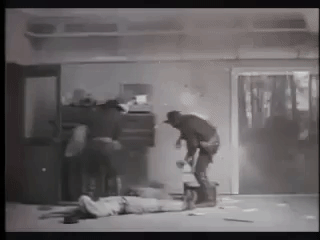
Two of the bandits climb to the top of the train, where one has a fist-fight with the fireman and...throws him off the train, damn! It's a dramatic throw, too. Anyway, once this happens, the train stops, and the bandits hold the passengers hostage aboard the train as the engine car is disconnected. The passengers are held up for their belongings, and...Jesus, guys, there are a LOT more of you than there are of the gunmen! Somebody just jump one of 'em!
Well, as if to answer my question, one of the passengers tries to run away, and gets shot in the back for his trouble. So, yeah, OK, I see the risk, but...I dunno, they only have so many bullets, I think you guys could take 'em. Anyway, the bandits escape, and the passengers immediately tend to the one who was shot. The bandits board the engine car and take off with their loot.
The party escapes into the woods a-ways down the train tracks, and meets up with their waiting horses. Meanwhile, the operator back at the station manages to get up and send out a message. His young daughter walks in and VERY smartly cuts her dad loose, making her the official hero of the film. She wakes him up, and we cut back to a dance party attended by some local lawmen. We get that Western trope where the lawmen shoot at a guy's feet to get him to dance, leading me to wonder if this is where that trope comes from?
The operator bursts in and tells the group of the trouble. They ride out to confront the bandits on horseback, but one of them gets shot in the process. Eventually, this leads to an all-out brawl in the woods, where the bandits are cut down as they count their loot. Good guys win, and the entire film ends with this classic shot of one of the bandits.
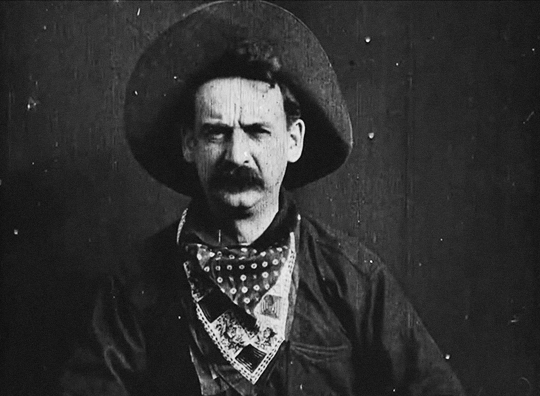
Review
So! Can I even review this one the way I would normally? I mean, probably; short films and silent films are still both films, after all, so it's not like it doesn't qualify. But there are some things obviously missing, or that need to be taken into context here. So, to go through it via bullet point method:
Cast and Acting - 7/10: Well, the actors are mostly forgotten, sorry to say; and while we know their names, none of them were actually credited in the film. The main character is arguably the bandit leader, as played by Justus Barnes, and possibly Gilbert Anderson as a few characters (including the dancer in the dance hall and the shot passenger), and Robert Milasch as the tied-up clerk (I think). Plus, it has arguably the first child actor in the form of Marie Snow, but that may need to be fact-checked. Still, they were all fine, especially for the time. Acting for no audience was sort of a new thing, after all. Hard to judge, this one.
Plot and Writing - 8/10: Hey, there is a plot, even if there's not really writing beyond a screenplay. Our writers here are director Edwin S. Porter and Scott Marble, who wrote the play this was based on. And for what it's worth, it's a simple plot. Men rob train, men get stopped. That's it. Not exactly Primer, this one.
Directing and Cinematography - 8/10: For what it's worth, I think Edwin S. Porter did a decent job in this outing. Again, this is a new doctrine entirely, so it's not like we're gonna find much creativity in either category here. Hell, according to some angles, Porter technically invented the concept of direction, but that's a very nuanced take on his role. At this point, directing just meant pointing the camera. Cinematographer (and yes, there was one) J. Blair Smith also did fine, as far as I'm concerned. Plus, hey...that last shot is iconic.
Production and Set Design - 9/10: Honestly, felt like I was watching a train robbery. So, it may feel a little Party City in terms of the bandit and lawmen costumes, but it also was authentic, so...yeah, high marks for this one.
Editing - 9/10: Normally, of course, I'd put music in this category, but...well, there's no music. So, it falls to editor...uh...oh. Shit. Wait, there's no actual editor for this one? I guess the closest I can get is Edwin S. Porter, who really carried this film. And there is editing, there has to be. After all, it managed to tell a story with literally no dialogue. No cards, no mouthed word, no music, nothin'. And yeah, I really wish that first or last one was in here at least, but the film still works without it.
So, yeah, in the end, that's an 84% for me! Which is probably causing some elderly film critic's tenderly cared-for stress-rage aneurysm to finally pop, but hey - it's how I feel. Great piece of history, completely free, and required cinephile viewing! Just go to Wikipedia or the Library of Congress.
OK, with that short-fill warm-up finally done, let's proceed through action film history! Good to be back!
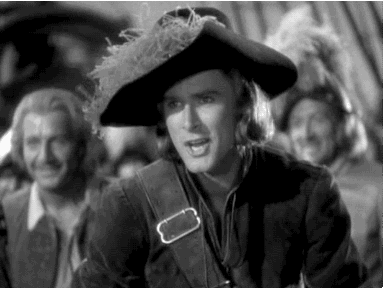
Next: Captain Blood (1935); dir. Michael Curtiz
#user365#365 days 365 movies#365 movies 365 days#365 movie challenge#action january#action#action movie#western#western film#action film#action genre#edwin s porter#edwin s. porter#the great train robbery#the great train robbery 1903#365days365movies#silent film
5 notes
·
View notes
Text
31 (Films) to Life: End of Year Round-Up I

Well, here we are: the start of another year of movies!
Geez, 2022 was interesting. Changed up the format from doing daily films and monthly genres, and focused mostly on films in one genre: crime. Aimed for 31 films, and out of that goal hit...24. Which, honestly, not too shabby. Didn't get as many reviews out as intended, but that is honestly OK. Was a busy-as-hell year for me, so I'm pretty well satisfied.
So, what did I see last year, exactly? Well, this post is about to be a round-up, which includes the films I wrote about, and the ones I didn't get the chance to. And at the end, I'll get into my plans for 2023. So, before I hit the "Keep Reading" button, here's the full list of crime films I saw in 2022.

M (1931); directed by Fritz Lang
The Maltese Falcon (1941); directed by John Huston
The Third Man (1949); directed by Carol Reed
Rashomon (1950); directed by Akira Kurosawa
The Killing (1956); directed by Stanley Kubrick
Cool Hand Luke (1967); directed by Stuart Rosenberg
The Italian Job (1969); directed by Peter Collinson
The Godfather (1972); directed by Francis Ford Coppola
Chinatown (1974); directed by Roman Polanski)
Dog Day Afternoon (1975); directed by Sidney Lumet
Taxi Driver (1976); directed by Martin Scorcese
Scarface (1983); directed by Brian de Palma
Once Upon a Time in America (1984); directed by Martin Scorcese
Thelma and Louise (1991); directed by Ridley Scott
Reservoir Dogs (1992); directed by Quentin Tarantino
Casino (1995); directed by Martin Scorcese
Heat (1995); directed by Michael Mann
The Usual Suspects (1995); directed by Bryan Singer
L.A. Confidential (1997); directed by Curtis Hanson
American Psycho (2000); directed by Mary Harron
Catch Me if You Can (2002); directed by Stephen Spielberg
Monster (2003); directed by Patty Jenkins
The Departed (2006); directed by Martin Scorcese
Zodiac (2007); directed by David Fincher
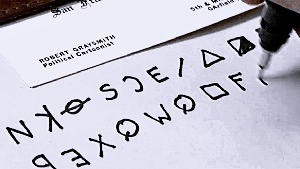
And there you have it! Now, this upcoming short set of summaries (behind the Keep Reading wall) may be a little too long for one post, so we'll split it up a little bit. But in any case, let's get this started!
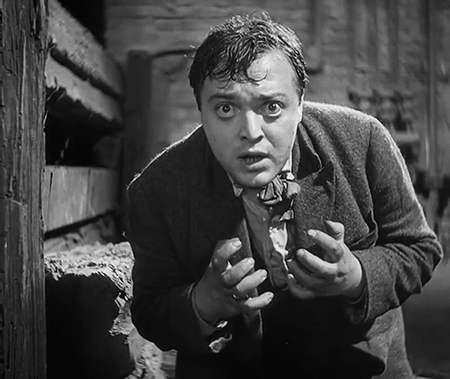
M (1931), dir. Fritz Lang - 92%
This one, you can check out my full recap and essay about if you're curious, but here's the summary: I loved this movie. Lorre's brilliant as the titular killer, the simple story is well-constructed and effective, the ending is beautiful, and the film as a whole is so impactful. Direction and shot composition is top-notch, the sound and music usage is genuinely revolutionary (having essentially invented the leitmotif), and while it's not the most iconic-looking film, it's still brilliant. PLEASE check this movie out if you haven't already.
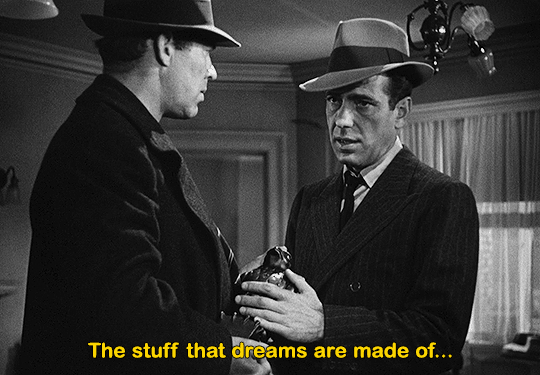
The Maltese Falcon (1941), dir. John Huston - 92%
Holy shit, I forgot I tried writing that whole review in noir-speak. Anyway, here's another classic film that I really like! Haven't seen many noir films, especially prior to this year, but this was a great one to start with. Definitely the prototypical noir detective movie, complete with Bogart's private eye, Astor's dangerous love interest, and the twists and turns that come with the genre. Beautifully shot, excellent plot and writing, wonderful music, and great acting. No complaints; check this one out.

The Third Man (1949); dir. Carol Reed - 96%
Holy shit, this movie! Absolutely my favorite Orson Welles performance, and that very much includes Citizen Kane. He's extremely good in this movie, which is a sort of non-traditional noir in a number of ways. The cast is perfect, from Cotten to Valli to Howard to Welles (especially the last one). Plot is perfect, and contains more twists than I know what to do with. Directing is great, if a little overly-tilted at times. Production and art design is beautiful. Music is...a lot of zither music. It's...it's a LOT of zither music. As I'm typing this, the score is BACK IN MY HEAD, and I haven't seen this film in 10 months. Let that shit sink in. And yeah, watch this movie, ASAP, please. You won't regret it, I promise you that.
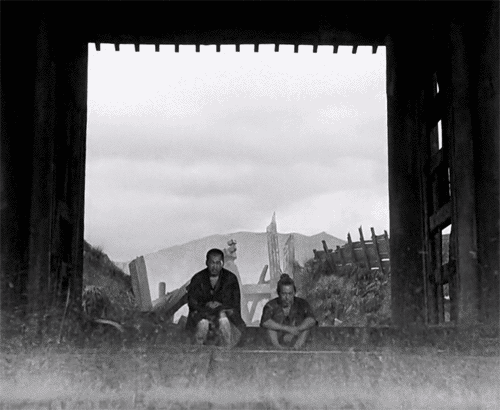
Rashomon (1950); dir. Akira Kurosawa - 100%
It's a perfect movie. A trope-maker, and revolutionary film in its own right, this movie...dear shit, this fuckin' movie. No words. Nothing needed. Just trust me when I say watch this film immediately. It's stellar. Man, I hit a lot of bangers early on this year.

The Killing (1956); dir. Stanley Kubrick - 90%
First of all, before anything else...fuck Sherry. And secondly, this movie is a great one, too. Still have more Kubrick movies to watch, but this one was absolutely worth it. Nail-biting and anxiety-inducing, yes, but also with one of the strongest plots I've seen thus far this year. A fantastic heist movie, it's only real weak points are a kinda normal production and art design, and sorta forgettable music. Other than that, it's an amazing film that people don't talk about. And, honestly, they really should. Check this one out if you're into heist movies and classic films!

Cool Hand Luke (1967); dir. Stuart Rosenberg - 90%
First one of these I didn't post a review on! And honestly...yeah, I'm OK with that. This Paul Newman vehicle is complicated to describe. On one hand, it's an interesting character study full of interesting characters. Newman's Luke is a great example of a rebellious character forced to face consequences for his actions, only to revert to his original nature, Frog and the Scorpion style. It's technically a trope-originator in that way, or at least a major trope-definer. And with a number of interesting supporting characters, especially George Kennedy's Dragline and Struther Martin's Captain, this is a surprisingly memorable movie...in some ways.
But it also...isn't that memorable? Don't get me wrong, there are a number of moments that come to mind in my head, as well as some shots and compositions that are great (the sunglasses of the Captain come to mind immediately), but it's also not exactly Lawrence of Arabia. Rosenberg and Hall are fantastic as director and cinematographer, for sure, but not always the most memorable and iconic. Also...there's the car wash scene. Like, I get the point of that scene, but it definitely cuts through the tone in a way that puts a weird taste in my mouth. Is it an effective scene for what it's trying to do? Um...yeah. Very, very much so. Possibly TOO much, in fact. And I realize that this is a huge nitpick that shouldn't make me give points off for editing, but it speaks to a weirdly inconsistent tone in some places. That scene isn't the only example of that, is all I'm saying. Still, excellent film, check it out if you're into prison movies.
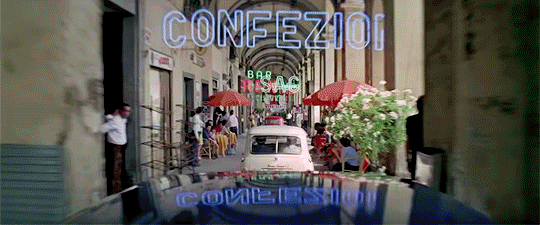
The Italian Job (1969); dir. Peter Collinson - 92%
Holy shit, this movie is fun! I genuinely love this film so much, even if it has its flaws here and there. Other than being a movie that was absolutely made at the cusp of the 1970s, it's one of the most British heist films I've ever seen. And that's not a bad thing in the slightest, believe me. But, it may be an acquired taste for some. But that said, here are the main things to know. This is a British heist film that stars Michael Caine and features a lot of car tricks, as well as one of the most iconic film endings of all time. And that about covers it. Michael Caine is the most Michael Caine you'll ever see him, and if you ever wondered why he was cast as Austin Powers' father in Goldmember, this movie will make you understand why. Supporting cast is also very good, but everyone takes a passenger seat to the car stunts, which are some of the best care stunts I've ever seen on film. If you want Ocean's Eleven with cars, this is the movie for you. Love this one.

The Godfather (1972); dir. F. F. Coppola - 100%
Cliché? Absolutely. The obvious choice to praise universally? For sure. The most mainstream, boring, dull, basic bitch film I could possibly like? Yeah. Yeah. BUT I DON'T GIVE A SHIT, BECAUSE IT'S FLAWLESS. Even if I didn't think this movie was essentially perfect, there isn't really anything I can say was wrong with this movie, in my inexperienced opinion. Cast and acting? Perfect. Plot and writing? Twisted and perfect. Direction? Iconic and perfect. Production design? Immersive and perfect. Music and editing? I CAN HEAR THE THEME SONG RIGHT FUCKING NOW, THIS MOVIE IS PERFECT. And you gotta understand, I put off watching this movie for YEARS because I thought it was gonna be boring. And then, I watched it. And post watching it? It's amazing. Watch. This. Movie. NOW.

Chinatown (1974); dir. Roman Polanski - 96%
...I saw a lot of good movies this year, OK? Look, this is also an excellent film, despite its reprehensible director. Just divorce the art from the artist and all that, and go into this movie completely blind if you haven't seen it. Taking it from me, it's essentially perfect. Only issues I had were that the Production Design wasn't particularly distinctive, and the music was mostly forgettable after the fact. And those were nitpicks. Watch this movie!

Dog Day Afternoon (1975); dir. Sidney Lumet - 90%
Did...did I watch a bad movie this year? I mean...yeah, I did. Black Adam sucked. And, like...Violent Night was...well, no, I liked Violent Night. Ooh, I was forced to watch Minions 2: The Rise of Gru, which was mediocre at best! I...OK, OK, look, you've heard this before at this point, but...watch this movie, OK? Another heist film, based on a true story this time, as well as being a benchmark in LGBTQ film representation, this film is a great one. Maybe I didn't like an acting performance, maybe the plot wasn't perfectly accurate to real life, maybe the cinematography wasn't always iconic, and maybe it could've used literally any music...but it's a great movie. Watch it.

Taxi Driver (1976); dir. Martin Scorcese - 90%
The "good movie" train keeps chugging forward with this one, because yeah...Taxi Driver is also fantastic. Truly one of the best character dissections I've ever seen, as well as a fascinating look at one of the most dangerous and crime-ridden environments in American history, Scorcese makes a really morally complicated film with...well, frankly, troubling consequences and implications. I didn't put out a review on this one (sorry, got stuck in the wasteland that is my Drafts page), but this film was partially responsible for Reagan getting shot, fun fact. And that may be because the shooter partially identified with Travis Bickle, who is a troubled and fascinating character. And for the record, the rest of this is fantastic as well, but De Niro's Bickle and Scorcese's NYC are the most prominent and most important parts of this movie. Love this one, too. Watch this film if you like character dissections!
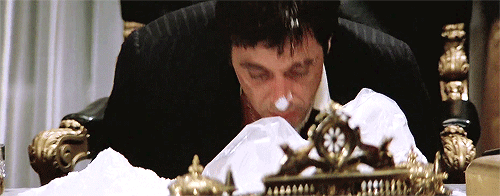
Scarface (1983); dir. Brian de Palma - 90%
OK, so...is this the most stereotypical college-age dumb jock poster-in-the-dorm-room movie in the fucking world? Yeah. Yeah, it really is. But is it a great movie despite that? I mean...holy shit, yeah, it's a very good movie. Sure, Italian actor Al Pacino playing a Cuban immigrant is a weird casting choice that's aged poorly in today's sociopolitical landscape...but he's also really fucking good at it. Seriously. Over the top, absolutely, but an extremely enjoyable watch all the same. Watching him slide into depravity and chaos when he already started there is fascinating, and Pacino just EATS the movie with how hard he chews the scenery. Look...it's a fun fucking movie to watch, and that's not even talking about the iconic lines, the supporting cast, the well-structured plot and story, the iconic costumes, and every other enjoyable part of this ride of a movie. I resisted watching Scarface for a LONG time, because I associated it with college-age fuckbois, but...shit, it's a good movie. Watch it if you haven't seen it.

OK, lemme pause here. Part Two coming next!
#user365#31 to life#crime films#crime genre#365days365movies#365 days 365 movies#m 1931#the maltese falcon#the third man#rashomon#the killing#cool hand luke#the italian job#the godfather#chinatown#dog day afternoon#taxi draiver#scarface#films i watched#watchlist#films i saw in 2022
10 notes
·
View notes
Note
Hey! hope you're doing alright, I just read your Legend (1985) movie review and noticed that you have a lot of knowedge about fantasy movies from that period, so I wanted to ask if you know a movie that I loved when I was a kid and I have been looking for it for ages.
What I remember about the movie is that the protagonist is a girl with short black hair, who lives in our world but ends in a fantasy world, where she meets a werewolf (If I'm not wrong he tries to eat her but he can't do it, don't remember why he can't), some kind of witch is after this girl, I think she had something the witch wanted (I think the werewolf was the witch's minion). Then I remember the end, where the girl returns to her world and the werewolf follows her because he is in love with her.
I also remember at some point in the movie the girl eats an caramel apple and she wans't suppose to do that, don't remember why, also remember that the werewolf propose to her in the fantasy world.
That's all I remember, sorry if is so little but I hope you could help me, I loved that movie when I was a kid and I just were able to watch it when it was on TV, so I never learned the name of the movie.
Thanks for reading my ask and hope you have a great day!

Oooooh, great question! And thanks for the inquiry into my well-being! Doing good, just a little busier than I want to be these days; but I’ll be back shortly, I promise that!
In truth, I'm not entirely sure which movie you're referring to, as I may need more details on it. BUT, were I to venture a guess, it sounds a little bit like the 1984 werewolf film The Company of Wolves, a British fantasy film starring Angela Lansbury (R.I.P.), Sarah Patterson, and David Warner, as well as a take on the Red Riding Hood story. There are a couple of things that make me think it could be this movie, like the phrase about "never eating windfall apples", and the fusion of our world and a fantasy world, as well as a romanticized take on the original story.
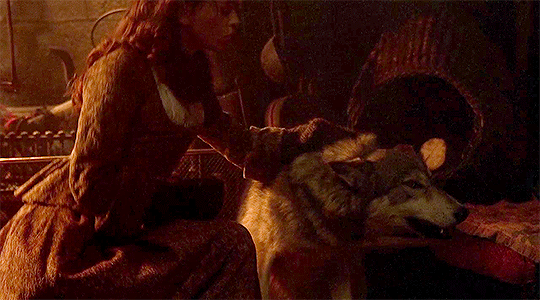
Buuuuuuuut, on the flip-side, its protagonist is a long-haired brunette, and I can't necessarily think of any witches in the story, so that's a little bit of a conflict. However, if you have any other details (live-action vs. animated, country of origin or present accents in the film, when you remember watching it in terms of time period), that might help! So, if this isn't it, I'll take some more details to try and help you out! If anybody else has any details, feel free to contribute!
#ask response#ask me anything#movies#ask me about movies#user365#365days365movies#the company of wolves#fantasy films#werewolf movies#werewolves
14 notes
·
View notes
Text
Musical December I: Singin’ in the Rain (1952) - Review
Well...this movie is perfect.

I know, I KNOW, this is the lazy answer, it would seem. But I mean it...this is an amazing film, and I genuinely can’t find any flaws with it. Like, seriously. I’m making this post as a formality, but there’s very little for me to say here. It’s an excellent musical, it’s an excellent film, it’s just excellent.
But OK, I’ll do a breakdown, I promise. It’s a good opportunity to test something out. See, given the fact that I’m covering musicals at the moment, it’s a good chance to change up the review scheme just a little bit. Here’re the changes:
Cast and Acting: Still basically the same, but singing talent and ability will now be included in the criteria for judgement.
Plot and Writing: This is in reference to the overarching plot, the use of music within the plot, and the writing during the spoken portions. Songwriting will be covered elsewhere.
Directing, Cinematography, and Choreography: Just what it looks like; we’re adding choreography to this category.
Production Design and Editing: We’re folding these together this time around. Why? Well...
The Songbook: Yeah, this has to be its own category, since we’re talking about musicals. Obviously, a proper songbook is also a part of writing and choreography, but this category is focused upon the quality of the songs in and of themselves. So, the songbook gets its own category.
And with that...

Check out Parts One and Two for the Recap!
Review

Cast and Acting: 10/10
God, I love these guys. Gene Kelly, Donald O’Connor, and Debbie Reynolds are, individually and together, some of the most enjoyable and charming protagonists I’ve ever seen in a musical. I genuinely love seeing them interact whenever on screen, and in any combination of the three characters. They’re genuinely perfect in terms of their interpersonal chemistry, and just a genuine delight.
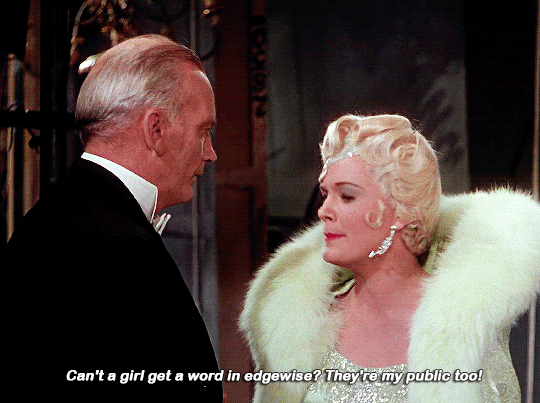
And obviously, they’re not the only notable actors in the film. Millard Mitchell shines in the latter half of the film, Cyd Charisse ekes mystique in the “Broadway Montage” sequence, and Jean Hagen...holy shit, Jean Hagen. Jean Hagen is a funny and despicable villain in this movie, and I grew to love her squeaky-ass voice (which is not her real voice, of course). She’s a horrible and petty person, but I had a lot of fun watching her. I had no problems with anyone at any point, seriously.

Plot and Writing: 10/10
The plot is fantastic, and well-done. But the writing! OH, THE WRITING! For a musical film, for a member of a genre with no obligation to use spoken words to get plot and story across, the writing in this movie has no business being as funny as it is! Not only do actors like O’Connor, Kelly, and Hagen say them with such perfect timing and grace, but writers Adolph Green and Betty Comden just genuinely wrote a funny-ass movie! God, some of the lines in this movie are amazing. Any interaction between Hagen and Kelly is bound to be funny in it pure acridity. And O’Connor is just constantly funny. Just...fuck, I love this movie.
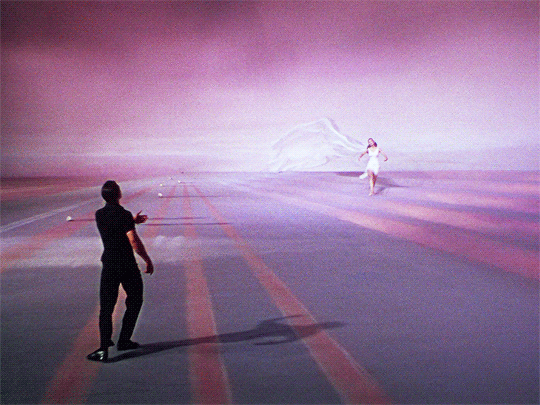
Directing, Cinematography, and Choreography: 10/10
THIS MOVIE HAS NO BUSINESS LOOKING THIS GOOD. From Gene Kelly and Stanley Donen’s amazing direction and choreography, all the way to Harold Rosson and his cinematography, the look of this movie is stellar from bottom to top. And I do mean how the film is shot and composed, to be clear. Not only are there some downright gorgeous shots, but the way that the musical numbers and dances are filmed is masterful. That is, of course, on top of the already masterful dance numbers. I will gush about Kelly and O’Connor until the day I die, and about the Cocteau-esque ballet sequence far after that point. It’s stellar. And that still isn’t including the next category!

Production Design and Editing: 10/10
Y;know, I considered giving this one a 9/10, purely on Adrienne Fazan and her editing. That’s because of the Broadway sequence, because I’d roginally thought that it was too long. But honestly, real fucking talk? It’s still a beautiful and flawless sequence! It drags a little, but I wouldn’t skip it at all! And if I were showing this film to anybody for the first time, I’d laud this entire sequence! The production design is stellar throughout the movie, but this sequence is particularly spectacular on that front. So, yeah, even the thing I like the least about the film is STILL too good for me to take a point off. Production and art design are fucking flawless.

The Songbook: 10/10
...WELL? WHAT THE FUCK DO YOU WANT FROM ME, IT’S SINGIN’ IN THE RAIN, FOR CHRISSAKES
Yeah, it’s perfect! The songbook, for literally being cobbled together from older songs and movies, is executed absolutely perfectly. It’s so utterly flawless, that the songs aren’t associated with any other musical but this one! It’s a jukebox musical that broke the fucking jukebox! And during these sections, by the way, I’ll be going into my favorite song of the musical. And for this one, that’s a nearly impossible question. “Singin’ in the Rain” is obviously a timeless classic. I’m a huge sucker for “Good Mornin'” as well, and both “Fit as a Fiddle (And Ready for Love)” and “Moses Supposes” are fun as hell. But I said this was a nearly impossible question.

Holy shit, do I love this song, and this scene.
This is, without a doubt, my favorite song in the film. Not only is the song memorable and a lot of fun, but Donald O’Connor’s vocal and physical performance will never leave me. It’s genuinely one of my favorite sequences in any film, and I love it more than I could possibly express. God...God, I love this movie.

Yeah. 100%. Genuinely one of my top favorites.
Which, yeah, is crazy for the first musical of the month. How in the hell am I gonna top this? Understand, this movie is amazing. If you haven’t seen it, I highly recommend watching it at least once. I’m gonna watch it far more than that. This is one of those movies that, if it’s on, I’m watching it. It’s just unabashedly joyous and happy, and I can’t resist movies like that. Has no business being this good, but it is.
It’s moments like this that I wonder if I’m exaggerating. Maybe the emotions from the film are still lingering, and maybe time will temper my judgement. But I genuinely don’t think so. Just in case, I’ll go into the next one. Gonna be another film from the ‘50s, another film from the long list of musicals I should’ve seen by now, and another musical prominently starring a ghost singer. And finally...it’s a film that I am a little scared to watch.

Next: The King and I (1956), dir. Walter Lang
#singin' in the rain#singing in the rain#singin' in the rain 1952#film:singin' in the rain#singin in the rain#gene kelly#stanley donen#arthur freed#donald o'connor#debbie reynolds#jean hagen#millard mitchell#cyd charisse#movie musical#musical film#musical genre#musical december#musicember#user365#365days365movies#365 movie challenge#useralex#musicalsgifs#usercarol
70 notes
·
View notes
Text
Musical December I: Singin’ in the Rain (1952) - Recap: Part Two
Since this is a movie about ghost singers...

Ghost singers dub the singing voices of the stars of musical films. Essentially, if the actor or actress has a poor voice, or a voice that isn’t quite up-to-par, the ghost singer is hired to dub over their voice with their own rendition of the song. Now, there have been a lot of famous ghost singers, but you may not actually know their names. Historically, they tend to be uncredited in film. Which, yeah, is REAL SHITTY. Thankfully, however, we do know a few of them today.
Arguably one of the most famous is Marni Nixon, the ghost singer for Natalie Wood in West Side Story. Yeah, Wood’s performance wasn’t stellar, apparently, and the film producers didn’t even TELL her that she was going to be dubbed by Nixon. And as a result she recieved...no direct royalties! Instead, she got (and I am not kidding) 0.25% of Leonard Bernstein’s royalties! Fuck off! She literally had to go to court for this, and got royalties from the soundtrack.
And here’s the crazy thing: you’ve also heard her in these roles:
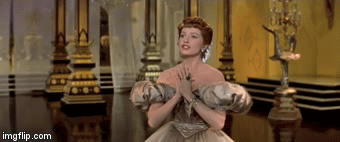

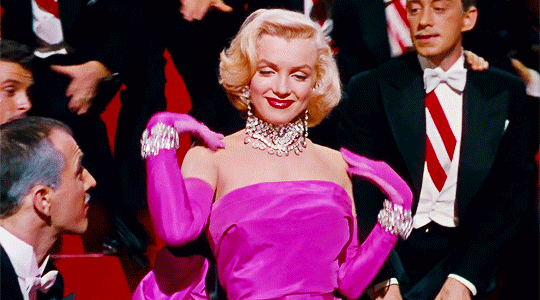

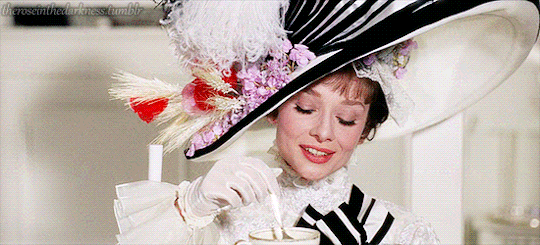

Yeah, uh...holy shit.
And while we’re at it, let’s talk about Betty Noyes. We at least know the roles that Marni Nixon took, but Betty Noyes was so prolific, we actually don’t have a confirmed list off all of her credits! Just fuckin’ suspicions! Now, granted, there are a few roles we know she did dub for. One was in Seven Brides for Seven Brothers, which I might watch this month. Another is...well, we’ll get to that one later. And the other major role?

Yeah, she was Dumbo’s mom!
Noyes was actually nominated for an Oscar for that song, indirectly! Because none of the voice actors in the film were actually credited, Noyes went unknown as the voice actor for this film for far too long. And again, that’s not including the films she dubbed in that we just don’t know about! Man, Hollywood.
These two, of course, are some of many ghost singers in cinema. Betty Wand, Bill Shirley, Bill Lee, Thurl Ravenscroft, and Drew Seeley come to mind. And that last one? Oh, you’re gonna love this.
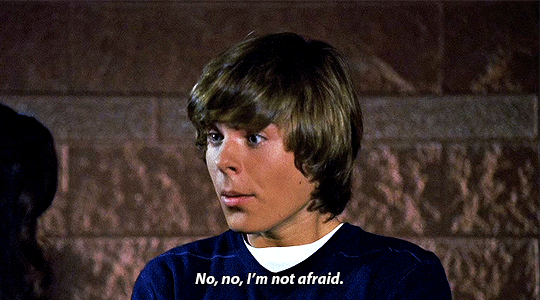
In the first High School Musical, most of Zac Efron’s lines were ghosted by Drew Seeley. This shit is still happening! Although, to be fair, Efron sung a few lines, and then sang all of his songs for the second and third films. But still, this practice is still in existence!
And so, with that said, a movie about ghost singers in genuinely an interesting choice for a musical. And that is especially because...well, we’ll get there. We’ll get there. For now, back to the show!
Check out Part One here!
Recap: Part Two

In order to prepare for being talkie stars, both Lina and Don go to diction coaches. Lina’s lessons go horribly, but Don’s literally ends in another musical number (”Moses Supposes”) with Cosmo. It’s a fun number, but they also ruin this man’s entire office. Jesus, guys, a little respect for the man’s working space.
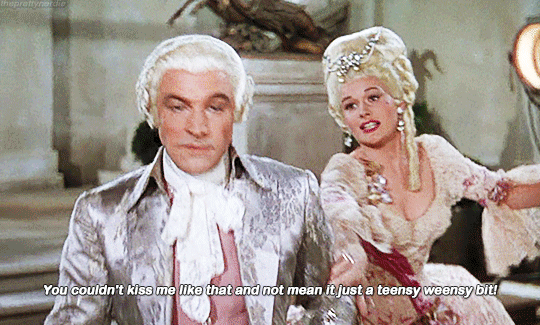
Filming begins once again, and the director, Roscoe Dexter (Douglas Fowler) has an actual mental breakdown with the difficult sound setup, and Lina’s complete idiotic inability to adapt. The film comes out, to the great nervousness of all the filmmakers. And unfortunately, Lina’s horrible voice, and the equally terrible sound recording quality makes the audience (and me) crack up with laughter. There’s a lot that happens, but it’s pretty clearly going to be a horrible movie.
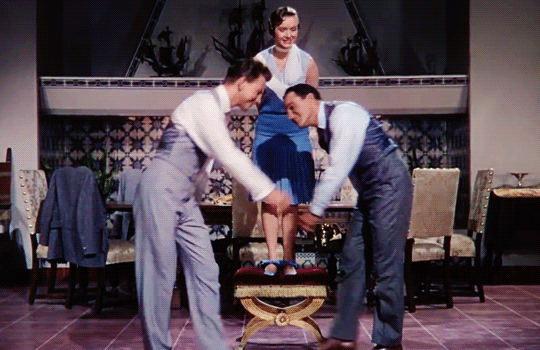
As the audience leaves, laughing and mocking the film, the stars (save Lina) realize that they’re completely fucked. In a dinner with Cosmo and Cathy, Lockwood laments his position. He also realizes that he’s not a good talkie actor, as he’s used to acting without sound. But the two friends pick him up and joke about going back into vaudeville.
But that gives Cathy an idea: why not turn the film (called The Dueling Cavalier) into a musical film! They have six weeks, making it a possibility. Excited, they talk into the morning, then sing a song about it (“Good Morning”, from Babes in Arms). And I love this song, but the entire time…all I could think about was the fact that Debbie Reynolds’ dress is the same as Quicksilver’s Silver Age costume. Seriously.
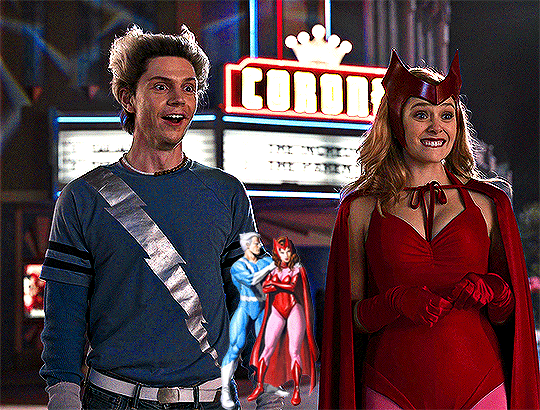
New head canon: Quicksilver is a BIG musical guy.
Anyway, after the song is concluded, the group realize that the issue with their plan is Lina’s voice. Cosmo has the brilliant idea to have Cathy dub over Lina’s voice in the final cut. Which is ironic because…well, more on that later. Anyway, it’s late. The party disbands, and Don brings Cathy home under the pouring rain. And well…you know.
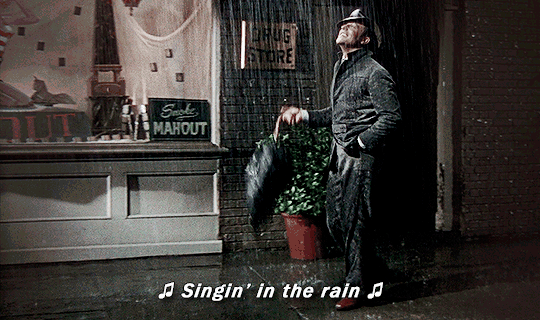
Yeah, this number (“Singin’ in the Rain”, from The Hollywood Revue of 1929), is arguably...what, did I just type “from The Hollywood Revue of 1929″? IT’S NOT AN ORIGINAL NUMBER?!? Wait, the namesake of this movie, the headliner song, the MOST FAMOUS NUMBER IN FILM HISTORY...is from a different musical? I...actually, you know what? Who cares?
Because this number is still arguably the most famous in musical cinema, as well as being beautifully done. Gene Kelly is the master of his craft, and he’s showing off in this number for sure. It’s just a happy and joyous number. And, again, if you’ve seen this movie and never done any of this dance in the rain, I feel sorry for you. You need to inject more joy into your life! Dance in a puddle, swing on a lamppost, trail and umbrella, confuse a policeman patrolling the street in the middle of the night! SOMETHING! It’s pure unadulterated joy in the form of song-and-dance, and I love it.
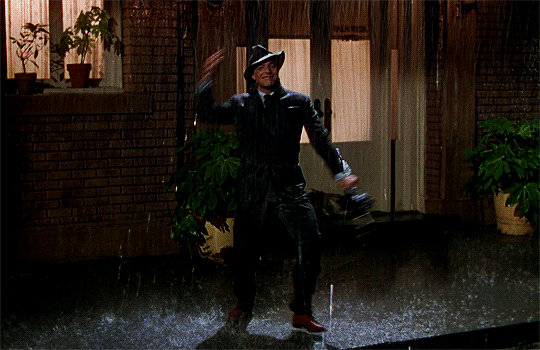
The next morning, the boys present the idea to Simpson, and he loves it. They rename the film The Dancing Cavalier, and Cosmo’s genuinely great film instincts allow the flawless reworking of the entire picture. Songs are written, Cathy gets to dubbing it, and Lena sings the original song. Horribly. And this is where the ironic part comes in.
See, the song being sung, “Would You”, features Cathy singing over Lina’s track. Thing is, though (and many of you reading probably knew this), Debbie Reynolds is NOT singing this song. Yeah, it’s actually Betty Noyes, a very famous dubbing voice actor for musicals from this time period. Meaning, yes, Betty Noyes is dubbing Debbie Reynolds, whose character is dubbing another character. Ironic.
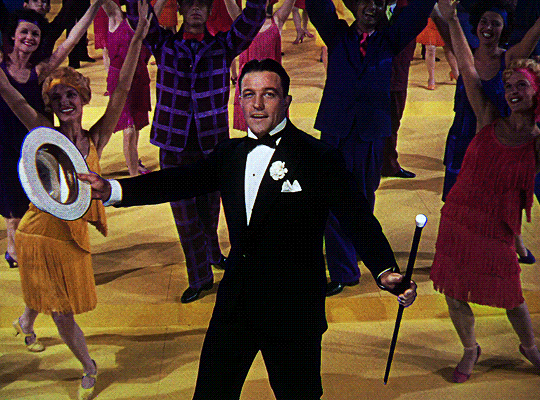
The plan goes off without a hitch, and Simpson is pleased. One more sequence is plotted out for the film. It’s a song called “Broadway Melody” (from various films), and takes place in the beginning of the hypothetical film. And it’s a ridiculously bombastic number. I love it. Holy shit, I love this movie. Seriously, there is nothing about this movie I dislike so far. This is absolutely lovely.

Those feelings are exemplified by this number, which serves as an interlude of sorts. It is LONG, and it concludes with a beautiful dance. The dress worn by the female dancer contains a flowing train, and off-screen fans make it seem ethereal. It’s genuinely a spectacular piece of art, and it's all about our musical’s main character falling in love with a woman (Cyd Charisse) at a casino, only to find that she’s taken. Instead, a coat and hat girl brings him his things, and he leaves the casino distraught. And this, remember, is meant to be the opening to the musical-in-a-musical. It’s a bit long and confusing…but it’s also spectacular. Like a little splash of Jean Cocteau’s Orpheus. Stellar.

But the whole thing is quickly ruined by, who else, Lina. After finding out that Cathy’s acting as her voice, she flies into a rage, and plots to get Cathy’s name besmirched. She goes around the studio entirely, and sends out an exclusive story to every paper in town. The stories claim that she’s a big musical star, making it a massive problem for the studio to give the credit to Cathy, as planned. Due to her contract, she is in control of her publicity, not the studio. She also makes it so that Cathy’s only future job is as a dubbing artist for Lina.
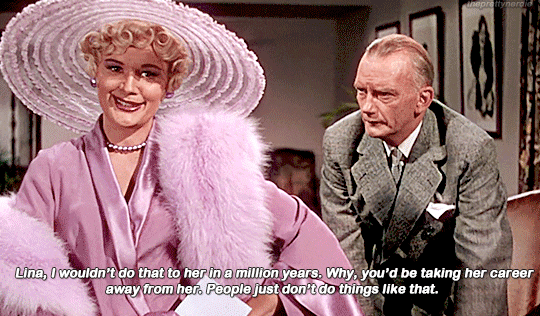
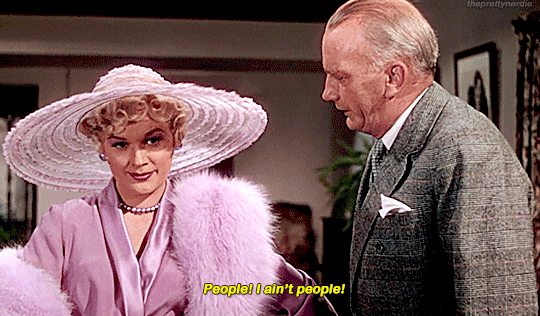
Fuck Lina, by the way; she’s a piece of shit.
The premiere happens, and the plan goes off without a hitch. The sound is fixed, the songs are great, and Cathy’s voice is beautiful. However, her credits are taken off of the film entirely, leaving her completely screwed. Because, again, fuck Lina. Said asshole gloats backstage as the crowd cheers. As the rest of them battle with the prima donna, she decides to go out and give a speech. Knowing that the situation will backfire on her, they let her do it.
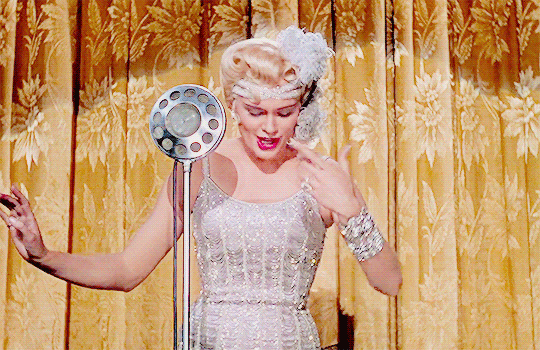
And IMMEDIATELY, upon hearing her real voice, the audience assumes that she’s doing a voice and asks her to sing for them. Seeing an opportunity, Don, Cosmo and Simpson plot as Lina panics. They tell her to go and sing, while Cathy dubs for her backstage. Don insists on it, enraging Cathy. She agrees to do it, though, and has Lina sing “Singin’ in the Rain” while she sings behind the curtains. And then…
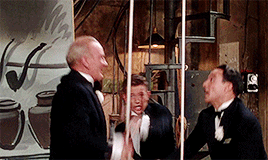
Sweet, hilarious karma.
The gambit’s up, especially when Cosmo steps in for Cathy. Lina runs off stage as the crowd laughs uproariously, while a shocked Cathy runs off stage. Don shouts into the audience, telling them to stop her! He gives her due credit as the voice they heard singing in the film, and she looks back at him with tears in her eyes. He serenades her, and they join in a duet on stage (“You Are My Lucky Star”, from The Broadway Melody).


...100%. Not kidding. See you in the Review.
#singin' in the rain#singing in the rain#singin' in the rain 1952#film:singin' in the rain#singin in the rain#gene kelly#stanley donen#arthur freed#donald o'connor#debbie reynolds#jean hagen#Millard Mitchell#cyd charisse#movie musical#musical film#musical genre#musical december#musicember#user365#365days365movies#365 movie challenge#musicalsgifs#filmgifs#usergina#classicfilmsource
41 notes
·
View notes
Text
Musical December II: The King and I (1956) - Review
Talked about Anna; now let’s talk about the King.

Born on October 18, 1804, Mongkut, or Phra Bat Somdet Phra Menthora Ramathibodi Sri Sinthara Mahamakut Phra Mongkut Phra Siam Deva Mahamakut Wittaya Maharaj (yes, really) was the legitimate son of a prince and princess, and became a Buddhist monk at the age of 20. Rather than immediately ascend to the role of king, he stayed a monk once his father died, and the throne went to an older half-brother of his, who was essentially voted into the position. Mongkut didn’t make any waves because he was cool like that.

When I saw Mongkut became a monk, he went all in on the monastic lifestyle. Traveled the country, strictly followed all of the monk rules, started a religious reform movement that eventually took over the religion for the entire country, yaddayaddayadda. Monk shit. After acting as a monk for 27 years (!), he was granted his rightful place on the throne after his half-brother died. And with that, his grand vision began.
See, YEARS before, Mongkut became the abbot of a Buddhist temple in Bangkok, and pledged himself in a modern education from the Western world. He studied astronomy, English and Latin, theology, the works. Mongkut really was a very educated man, and motivated to be further educated. He actually invited the preaching of Christian sermons IN A BUDDHIST TEMPLE. Dude was cool, is what I’m saying.

In fact, his coolness with the Western world is part of the reason for his succession of the throne. Mongkut beat out 72 other kids for power, and was supported by many members of the government and nobility. At 47, Mongkut becomes king of Siam. He was famous for his pro-British stance, which was notable due to Britain’s influence in the region. Siam’s neighbor, Burma, had been losing territory to the British Empire. Because, y’know, Britain be Britain. But Siam, amongst all of the kingdoms of Southeast Asia, would be the only one to stay independent.
Now king, Mongkut got busy with modernization...and also with not being a celibate monk anymore. Yeah, uh, he immediately gathered a fuckton of wives. And I mean a fuckton. In the end, Mongkut would have 32 wives and 82 children. And this was within only a 17-year reign, meaning he had a child every 3 months! Jesus, man!

Between fucking and...well, more fucking, Mongkut sought to appear as a modern Western nation. This was more political than anything else, as he’d wanted to prevent the nations of Europe from looking down on Siam, therefore preventing it from being colonized. Which, to be fair, definitely worked. This included a few ideological changes in the knowledge of Siam.
Firstly, the world was now officially round, which was squarely against Buddhist teachings. Understand how big a deal this is at the time. This is exactly the same as the evolution vs. intelligent design debate that still rages on in middle America and fundamental Christianity. Or the same as...people who believe that the Earth is flat today. FUCK, I forgot what timeline I lived in for a second, because this one is fucking ridiculous most of the time, Christ.

He continued this trend by having foreign missionaries from the USA and UK teach his family geography, astronomy, and English. He even was...relatively feminist. He released some of his concubines, ended forced marriage practices, and also ended the practice of using women as literal currency. Which, yes, was an actual thing at the time. So...kudos for that? Yeah, it’s below the very the bare minimum, but it’s at least an improvement.
But in the process, he still embraced Siamese culture through wardrobe and practices. He was still mostly faithful to his country and its beliefs, and he made that known to foreign emissaries. This culminated in the Bowring Treaty, which saw British emissaries from Hong Kong visit for economic trade reasons. See, traditionally, any member of the Siamese state would be threatened with torture for trading with foreigners. Which is, yeah, a LOT. But with an increasingly globalized world, that practice wouldn’t be sustainable for long. The Bowring treaty began trade agreements with Siam and Britain, and this began some revolutionary changes for the southeast Asian country over the next decade.
And now...enter Anna Leonowens.

Anna Leonowens came to Siam in 1862, and was hired as an instructor for the royal family. Which, again, was a super common practice at the time. Anna would end up making a lot of claims about her time there, most of which were heavily influenced or generally incorrect. For example, the Uncle Tom’s Cabin thing? Nope. Slavery was more like indentured servitude in Siam, for starters. And secondly, that practice would be ended 40 years after her visit there. So, yeah, Anna’s influence wasn’t really a part of that.
Secondly, the war elephants thing, much to my eternal regret, never happened. He never offered elephants to Lincoln to fight the Civil War. The letter was actually sent to James Buchanan, and just detailed a gift of normal elephants, for the purposes of breeding. I mean, if Jefferson can get a huge block of cheese, then Buchanan could get elephants. And it might’ve broken the ecosystem...but in an alternate universe, the USA is just a little bit crazier.

Lastly, Mongkut obviously didn’t die of a broken heart, for God sakes. Dude died of malaria after going on an expedition to watch a solar eclipse which he accurately predicted. Because Mongkut was an intelligent boss of a human being, and an absolutely brilliant man. And he wasn’t a vicious and violent barbarian trying to play at being a sophisticated Westerner. He didn’t need to be a Westerner, obviously. Dude was just a fascinating individual.
Which is probably why Thailand HATES Anna Leonowens.

To be fair, a lot of this has to do with the concept of lèse-majesté, which is the crime of saying that royalty or leadership sucks. We may shit all over America, but at least I have the ability to say Donald Trump was an absolute utter piece of shit without dealing with repercussions from the government. Freedom of speech and all that. To this day, in Thailand, any defamation against the royal family is straight-up illegal. Thailand is the only country with a constitutional monarchy to be heavily enforcing this law to this day. You can get three to fifteen years for speaking against royalty, with the most recent sentence from this year being a woman serving 43 years in prison! Christ, Thailand, what the hell!
Today, every single iteration of Anna Leonowens’ story is banned in Thailand, from the books to the play to the movies. This is, obviously, because of offense taken on behalf of Mongkut, and I don’t know if they’re wrong about that. Fact of the matter is, this franchise does represent a Eurocentric depiction of a foreign culture, and to problematic degrees as seen from a modern context.
But, uh...it’s still a great musical.

Yeah, the funny thing about problematic material is, while it deserves to be lambasted for its retrospectively negative qualities, it doesn’t mean that it doesn’t have good qualities! And maybe that’s a controversial viewpoint, but it’s how I feel. For example (and PLEASE hear me out, I beg of you), I still think Bill Cosby’s standup is genuinely funny (especially Bill Cosby: Himself), and The Cosby Show is a classic American sitcom that changed the way Black Americans were viewed, and how they viewed themselves. As a Black American, that show meant something to me and to my family. However, Bill Cosby? Still a rapist and a monster who hid behind that folksy image for decades. Yeah, he’s still absolutely a hypocritical piece of shit, but the man made good comedy, is all I’m saying. This is not an excuse for the man’s actions, just an acknowledgement of the quality of his work.
And hell, we accept a lot of problematic material in some of the greatest films ever made, because we recognize the quality of the film itself. Leon the Professional, as I discussed earlier this year, has some REALLY uncomfortable shit revolving around Natalie Portman and Jen Reno’s relationship, but it’s a good action film regardless. West Side Story is considered one of the greatest musicals ever made (and for good reason), but heavily features white actors dressing up as Hispanic characters, including the main Hispanic character. And Gone with the Wind is considered one of the greatest films ever made, despite having some of the most offensive stereotypes I’ve EVER fucking seen. Also, real talk, that movie pisses me off.
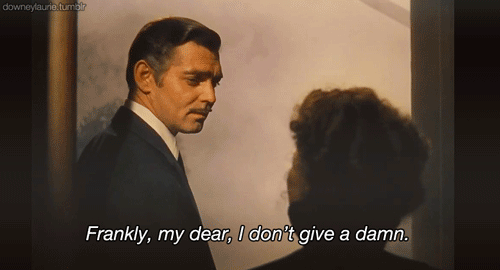
Recognize the problems, and try and see beyond them.
Yeah, this movie is historically inaccurate, technically features yellow face (yeah, uh, didn’t even talk about THAT bullshit, but Yul Brynner’s obviously not Thai), and is understandably banned in Thailand...but shit, it’s still a good movie. Perfect? Well...no. Definitely not perfect.
But let’s get into it, huh? Part One and Part Two of the Recap are right here!
Review

Cast and Acting: 8/10
Let’s talk Deborah Kerr first, because she is great as Anna Leonowens. Calm but strong, she gives the character the energy she needs, and is convincing as a caring teacher, single mother, and strong woman of the world that values herself and her beliefs. Seriously, Anna’s great, and Kerr does an excellent job playing her...during the speaking scenes. The singing belongs not to her, but to Marni Nixon, famous ghost singer and an excellent one at that. Check out my Recap of Singin’ in the Rain for more details about her and ghost singers. The supporting characters are also of note, even though I wouldn’t say they’re...great? Rita Moreno is playing Tuptim, and she’s not too bad. Same with Terry Saunders, Patrick Adiarte, and Martin Benson, who might actually be my favorite of the supporting cast. Didn’t talk about the Kralahome much, but he’s an interesting character who could’ve been used a bit more. But, uh...let’s get to the main event.
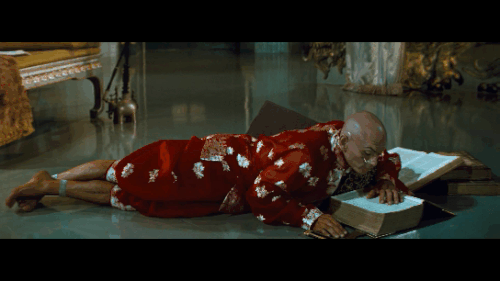
Yul Brynner is both amazing and...not amazing.
Genuinely, Brynner makes Mongkut the best character in the film, and absolutely the most entertaining when he comes on screen. And yeah, I mean that. Mongkut, inaccurate though he may be, is a fun character to watch, if not also somewhat frustrating. Which is likely the point. And Brynner tows the balance extremely well most of the time. His singing is...not great. It’s not great. And most importantly...he’s not Thai. Yeah, like I said above, I may not have mentioned it in the Recap, but it’s REALLY obvious. It was the times, I get that, and diversity in Hollywood was low, so I can somewhat forgive the movie for that. But it does get awkward, is all I’m saying. Brynner won Best Actor for this and...yeah, I didn’t get it at first, but with some time since watching the movie, I can acknowledge that he did an excellent job. So, yeah, he’s A Puzzlement, for lack of a better word.

Plot and Writing: 8/10
Honestly, this is a good story. Simple, but a good one that you don’t see too much. It should be an overwrought plot, but this film somehow makes it seem fresh? Obviously based off the semi-fictional books by Anna Leonowens and Margaret Landon, then adapted to film by Ernest Lehman, this is a well-written story and script...that’s clearly a stage musical. Yeah, uh, this is pretty obviously a Broadway musical adapted to film, in a way that Singin’ in the Rain and West Side Story aren’t. That, to be fair, may be due to the acting and direction, but the screenplay definitely doesn’t mess with the play’s script much. Or at all. And with that said...

Directing, Cinematography, and Production Design: 10/10
Oh, yeah, I changed this category then I realized that Production Design should just go here. Anyway, that point I made about the adaptation from stage to film? Yeah, Walter Lang did film this as a play, but added film flourish to it throughout. And it really works. Like, it REALLY works. Lang does a great job, as did cinematographer Leon Shamroy, because some of the shots are framed beautifully. Finally, the production design is absolutely gorgeous. It’s beautiful and well done, from costumes to sets. Absolutely no complaints, and there’s a reason this film won Oscars for Best Art Direction and Best Costume Design (for Hollywood legend Irene Sharaff)!
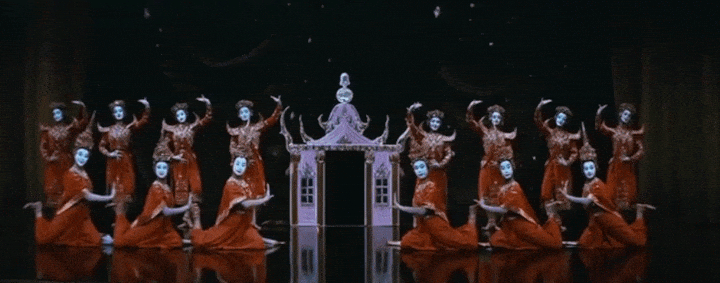
Editing: 9/10
It’s very well done and well-paced! No complaints, and few comments for this particular category. Credit to Robert Simpson, and to Carlton Falkner for sound recording (which is very well done, especially for the 1950s)!

The Songbook: 9/10
And here we are again, because this songbook is wonderful...for the most part. Where Singin’ in the Rain has a 100% iconic songbook, this one is...less so. It’s like 90% iconic. The instrumental scores are great, and the memorable songs are memorable. I’ve had “Shall We Dance” stuck in my brain for DAYS since I’ve seen this film, and “Getting to Know You”, “Whistle a Happy Tune”, and “A Puzzlement” are all very memorable parts of the score as well.
And the rest...eh? I feel like I should like both “Something Wonderful" and “Hello, Young Lovers" a lot more than I do, and while they’re good songs, I don’t remember them. Like, AT ALL. Completely wiped from my memory. And I literally forgot about “We Kiss in a Shadow” until typing this! Honestly, this might just be a me thing, but...eh?

88%, et cetera, et cetera, et cetera.
I do think this is a good movie, and I’m glad that I’ve seen it! However...it’s not in my top 5 live-action musicals. Yeah, sorry. It is good, and I’d be more than happy to watch it again, but it’s not my favorite. Who knows, though? Maybe I’ll watch it down the line and gain some new appreciation for it. I could see that happening with this one.
OK, what’s next on the list of musicals I should’ve seen by now? Let’s do another movie with Marni Nixon ghost-singing, because I can’t think of a better excuse to talk about another musical I should’ve seen by now.
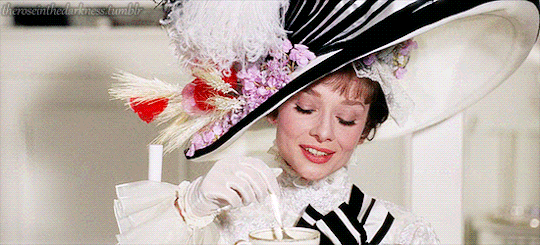
Next: My Fair Lady (1964); dir. George Cukor
#the king and i#the king and i 1952#film:the king and i#walter lang#rodgers and hammerstein#deborah kerr#yul brynner#rita moreno#martin benson#user365#365days365movies#365 movie challenge#movie musical#musical film#musical december#musicember
30 notes
·
View notes
Text
Musical December I: Singin’ in the Rain (1952) - Recap: Part One
Yeah. I don’t know how I haven’t seen this yet either.

Literally the greatest movie musical of all time, and I haven’t seen it? AFI’s got it as the best musical film ever, and the fifth best film (as of 2007, so take from that what you will). Some people think it IS the best film ever made, and definitely the best musical film ever made. As for my showtune-loving ass, I know a number of the songs BY HEART, and I haven’t actually seen this movie? I don’t even know what it’s about! Man.
But OK, what is this musical, exactly? To understand that, you have to go into, funnily enough, the film’s producer. Arthur Frees was a pianist born in South Carolina. After working the the Marx Brothers’ original vaudeville act (check out their history here if you’re interested), he was hired as lyricist by Metro-Goldwyn-Meyer Studios, AKA MGM. He eventually became an associate producer for a smaller film of theirs.

Obviously, things were going well.
His career as producer begins in earnest with another Judy Garland film, Babes in Arms, and that begin a five-film series starring the two, all produced by Freed. MGM quickly climbs to the top of Hollywood, and Freed was a part of that climb. In the process, major film stars were brought into the fray. Judy Garland, Mickey Rooney, Shirley Temple, and Zero Mostel, for starters.
But then, Freed also went to his perforing roots and brought people from the stage to perform in his productions. Singers like Frank Sinatre and Lena Horne; stage stars like Mostel, Red Skelton, and Vincente Minnelli, and famous dancers like the legendary Fred Astaire, and of course...
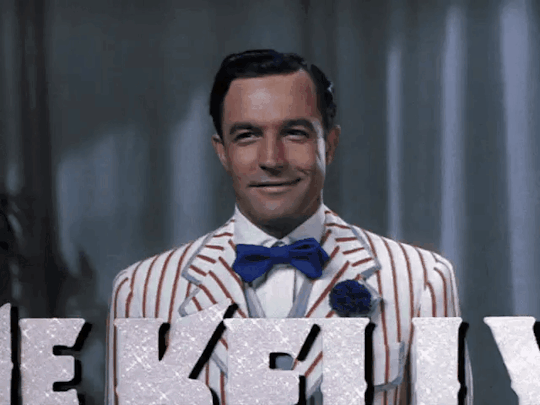
I swear, Gene Kelly’s dance moves are hypnotic to me.
With all these people under the fray, Freed became a Hollywood sensation. An American in Paris, Gigi, Show Boat, Easter Parade, all massive musical films, and al massive successes. Freed-produced musicals were a huge smash, and that’s mostly because he was very hands-off in the making of these musicals. He took a step back from the actual filmmaking for the most part, and quite literally Freed them of the normal trappings of movie musicals.
And it worked! An American in Paris and Gigi were both Oscar-winners for Best Picture, and Freed was the first person to be nominated and win as the producer for the film, as opposed to the studio as a whole being nominated. This was in 1951. The following year’s film wouldn’t receive any Oscars at all, but would also be a critical and commercial hit. And so...

This film, this legendary picture, is actually the child of a back catalog. With any given musical, stage or screen, you’ll form a catalog of used and unused songs. Freed wanted to use a number of his songs from previous musicals, and hired writers Betty Comden and Adolph Green to write a story that could bring the songs together. The result was one of the most famous musicals ever made, containing some of the most famous songs ever written.
And I’ll say this again, for the back room. If you’ve seen this film, and haven’t thought of the song “Singing in the Rain” while walking around in the rain AT LEAST ONCE, you are clinically dead inside. I haven’t seen this movie, and even I’ve twirled an umbrella and spun around a light post once or twice! The song itself is a symbol of joy within surrounding gloom. It carves out happiness in an environment associated with falling tears. So, goddamn it, grab and umbrella and start spinning a little, OK? It’s a classic film moment that I knew, and again, HAVE NOT SEEN THE FILM!

OK, enough. Let’s watch the actual movie!
SPOILERS AHEAD!!!
Recap: Part One

It’s 1926, and a new film is about to premiere. The fans are going fuckin' crazy as the stars of the silver screen show up to the premiere. But they all REALLY freak out when the stars of the film show up. And I’m talking Foaming Mouth Guy freaking out, to be clear. Beatlemania, women fainting, literally a dude just SCREAMING. Jesus. The stars in question are Don Lockwood (Gene Kelly) and Lena Lamont (Jean Hagen), household names and faint-inducing stars.
Rumors state that the two will be married soon, but Don insists that they’re only good friends at the moment. The newscaster prompts them to tell the story of their success from the beginning, which includes them and musician Cosmo Brown (Donald O’Connor). And from there, we launch into a flashback.

Said flashback is chock-full of lies, as we see the truth of their origins over a false narration. They began with nothing, and stayed having nothing, as the two friends became a vaudeville act during the golden age of vaudeville. And, unsurprisingly, their introductory song and dance (“Fit as a Fiddle (and Ready for Love)”) is spectacular. God, Kelly and O’Connor’s dance moves are just...hypnotic. I’m in love with it.
Unfortunately, audiences disagree, and the two have essentially no success. They try their look playing scores for silent movies, for the studio known as Monument Pictures. However, once Don subs in for a downed stuntman with his superior agility, he begins a new career as a stuntman. Which is, then and now, a severely under-appreciated job in film. So, yeah, credit where credit’s due.
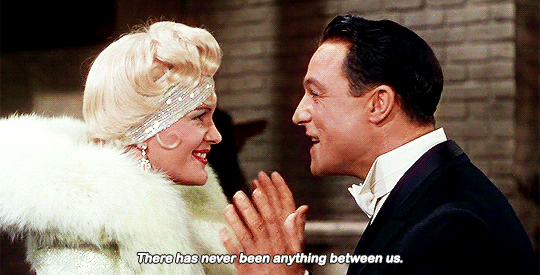
This is also where and how he met Lina Lamont, who initially gives him a complete cold shoulder. And when he finally obtains success, and Lina tries to cuddle up to him as a result, he turns her down. So, yeah, they hate each other. From there, the new film begins. This silent film is The Royal Rascal, in which Don plays a swashbuckler. After the film concludes, the two actors get on stage to thank the standing audience. However, each time Lina tries to talk, Don cuts her off. We find out exactly why when they go backstage: she’s Harley Quinn.

And I absolutely mean that; couldn’t unhear it for the entire movie. Kept thinking about that one musical number in Harlequinade in Batman: The Animated Series, where she gets on stage and sings. Honestly, I wouldn’t be surprised if this voice was the inspiration for Arleen Sorkin’s original voice for Harleen. But in terms of Lina Lamont, it’s apparently not the best voice for public speaking. Lina’s upset by this, as well as by her continually rejected advances towards Don. Although, to be fair, she doesn’t even seem to acknowledge these rejections.

Don makes his way out of the theatre, escaping from rabid fans by…Jesus, jumping onto a passing bus? Talk about a try hard, geez. He jumps off a bus into the car of an understandably startled Cathy Selden (Debbie Reynolds), who tries to sic the cops on him before realizing who he is. After that, she offers to give him a ride to Beverly Hills. On the way, she notes her opinion of film actors, which is far less than that of those on the stage. In fact, she wishes to become one of those same performers, if she can make it to New York. This offends Don, also understandably, and the two trade banter and part ways.

At the wrap-up party for the movie (”Temptation”, from Going Hollywood), head of the studio R.F. Simpson (Millard Mitchell) shows the partygoers a new film technology: synchronized video and sound. Yup. This film is about the rise of the talkie. And since this is a movie about silent film stars, I think we know how this is gonna go.

After the partygoers leave the show, they’re treated to another one, as a woman bursts from a cake. And yup, this woman is Cathy, working at the party with a troupe of dancers. They perform a song and dance (“All I Do Is Dream of You”, from Sadie McKee), and Cathy tries to take off right afterwards. But when Don tries to stop her (with insults, to be fair), she tries to retaliate with a pie to his face…which hits Lina instead. Whoops.

Seeing the score, Cathy takes off in a hurry. This results in her losing her job, which makes Don feel lousy. As, to be fair, she should. Time moves on, and a film is released that changes the entire scope of film. This is The Jazz Singer, and if you know your film history, you’ll know three things about this movie. One, it’s the first talkie, and was a game-changing revolution for the industry. Two, it was a musical, making this kind of a meta-commentary, and I can dig it! And three: blackface. Fuckin’…yeah. Different conversation for a different day.

Anyway, this change results in some changes for Don as well. But that’s preceded by a pep-talk from Cosmo, in the form of the song “Make ‘Em Laugh”. Which, to be clear, is a great song on its own, and possibly based on a song by Cole Porter called “Be a Clown”. I’d had it on my playlist long before seeing this movie. But actually seeing it with Donald O’Connor’s amazing dance and comedic choreography…holy fucking shit, it’s spectacularly funny as well. I love it. It’s absolutely a masterpiece.

Soon after, filming is set to begin on a new film, taking place during the French Revolution. In another funny scene, Don and Lina start doing their silent acting of being in love, while speaking words of pure acrimony out loud. See, out of spite and jealousy, Lina got Cathy fired from her job by talking with her boss. And while Don already hated her, it’s FAR worse now. And if that wasn’t enough, The Jazz Singer is a smash success.
This means that Mr. Simpson is turning the silent film studio over to making talkies. Cosmo is now head of the studio’s music department, so good for him! And as the men in charge discuss the change, they all come to a realization that Lina’s voice…is fucking horrible. But the film must move forward, so the studio shuts down to make the preparations.

After a spirited musical montage showing the advancement of talkies (“Beautiful Girl Montage”, from multiple sources), we find Cathy working as a dance girl for a film set. She’s spotted there both by Mr. Simpson and finally by Don, who’d been looking for her. While she assumed he hated her, he’s actually very happy to see her. And yes, she is the Inevitable Love Interest of the film. She gets hired on Don’s film, and the two finally have their own song and dance together
(“You Were Meant for Me” from The Broadway Melody). This is, of course, a love ballad, nearly culminating in a kiss.

I fucking already adore this film. Can’t wait for Part Two!
#singin' in the rain#singing in the rain#singin' in the rain 1952#film:singin' in the rain#singin in the rain#gene kelly#stanley donen#arthur freed#donald o'connor#debbie reynolds#jean hagen#millard mitchell#cyd charisse#movie musical#musical film#musical genre#musical december#musicember#user365#365days365movies#365 movie challenge#useralex#vintagegifsdaily#batwan#tuserjulian#userfilm#classicfilmsource#helenspreference#usersasha#cinematv
37 notes
·
View notes
Text
31 (Films to Life): The Godfather (1972) - Review: Part I
Oh...Oh, shit. We’re here? We’re FINALLY HERE?

This is it. This is one of the greatest movies ever made (allegedly), and the highest profile movie I’ve never seen...up until this point. One of the most referenced, legendary films ever made, and only now do I get around to watching it. But hey, it’s here! So where the hell do I even start with...
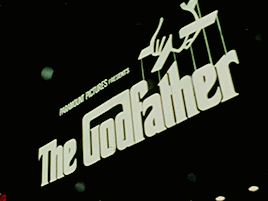
Well, let’s start at the beginning: the Mafia. Which is a hell of a place to start, since the history of the Mafia is long and complicated, even for me. But to summarize, the Mafia, or “La Cosa Nostra” as the government calls it, is a fleet of organized crime families originating in Sicily, at least back to the 1800s. Considered public enemy number one for the better part of a century, they expanded to the United States with immigration and began the American Mafia. And while it would spread across the country, it really started in a place near and dear to my heart.

Manhattan and Brooklyn soon became big areas for the Mafia, and they quickly spread to Boston, Hartford, Philadelphia, Chicago, Los Angeles, Las Vegas, Tampa, Seattle...just EVERYWHERE. They became involved in...well, most things, really. Guns, alcohol, gambling, tax fraud, extortion...you name it, they did it, and probably killed for it in many cases. The 1920s onward was a bad time to make an enemy of the mob. And while I could take the time to talk about Al Capone, or the various las Vegas and Hollywood scandals, or the alleged involvement with the robbery of the Isabelle Gardner Museum in Boston...we have another city to talk about here.
In New York City, the Five Families soon rose to prominence: the Gambino, Luchese, Bonnano, Colombo, and Genovese families. Formed after a nasty gang war in the city in 1931, this council of capos basically ruled the city, and any smaller families that fit beneath their purview. To this day (and I mean to this day), the families hold a lot of power amongst organized crime families in the city. And as competitors for the same resource do in a given environment, there’s some niche partitioning here, mostly spatially. Different families ran (and run) different neighborhoods, and worked together when necessary. A clean system for a filthy business.

Now that said, there is a LOT to this history I’m not going into, and far more I straight-up don’t know. Check out the Netflix documentary Fear City: New York vs. the Mafia if you want a little more information, or the other documentary This is a Robbery if you’re even more curious. But suffice to say, the Mafia was an open secret in NYC at the time. And even more than that, it was an inspirational force for many creators, if not a terrifying one. Enter Mario Puzo.
In 1969, while the Mafia was still strong and thriving, Puzo is an author born and raised in the city. He’s also a risk-taker, with his primary risk in this case being writing a very publicized story about the Mafia in New York. Although the family at the focus, the Corleones, was a fictional family set within a fictional Mafia structure, that didn’t make writing about the families safe in any way. It also made some not-too-subtle references to the real-life mob and allied people. And it was a smash hit.
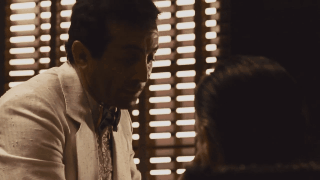
Yeah, people loved it, and Puzo was in the money! Granted, not everybody was a huge fan. Johnny Fontane, pictured above, was meant to be real-life crooner Frank Sinatra, whom everyone suspected of having mob ties. Sinatra was understandably not pleased about this, and almost sued Puzo and Paramount, once he heard that a film was going to be made off the book. That also applied to members of the Mafia itself, who were OK with the book, but not overall happy about the movie. And speaking of...
The movie brought on new young director Francis Ford Coppola, who wasn’t a massive fan of the book, but still wanted in anyway. The production was initially plagued with harassment from associates of the Mafia, as well as those afraid of messing too much with the organization. However, with some negotiations with a few “representatives”, problems seemed to magically disappear. Movie’s on as scheduled! The movie debuts in 1972 (after members of the Mafia get a private screening, allegedly), and the first shot comes up to interested audiences...
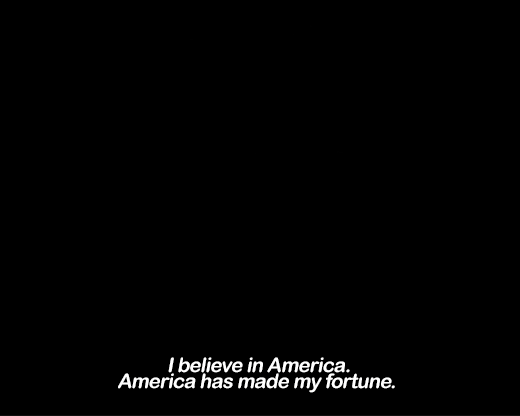
And the rest...well, the rest is history, as they say.
The Godfather was a MASSIVE success. The in-depth story about a Mafioso and his family over the course of 10 years was popular with critics, popular with audiences, and REALLY popular with the mob itself! To this day, certain aphorisms and behaviors in the Mafia can apparently be traced directly to this movie. Which isn’t surprising, since this film literally affected EVERYBODY. It’s one of the most referenced films in all of media, and we almost all know at least something of this movie, be we boomer, Gen X, millennial (that’s me), or Gen Z. It’s an American classic, and often called one of the greatest films of all time.
So let’s see if it lives up to the hype. SPOILERS AHEAD!!!
Plot - Part I (by Mario Puzo and Francis Ford Coppola)

It’s 1945. A man is telling the story of his daughter’s brutal rape, as well as the lack of justice meted out to her rapists. To get true justice, he goes to mob boss Don Vito Corleone (Marlon Brando), on the day of his daughter’s wedding. The Don protests, as he came to him with little to no true respect. Only when the man capitulates, does the Don agree to the man’s requests. Jesus CHRIST, this cold open, holy shit.
But hey, lighten up, it’s a wedding! The congregants dance merrily, and my fiancée remarks that her Italian great-grandmother wore the same pink dress during her mom’s wedding. We get introduced to a number of Corleone’s associates, but I won’t get into them all here. Meanwhile, Vito continues to deal with visitors. Since no Sicilian can refuse a request on his daughter’s wedding day, a bunch of people keep asking things of him.

One of these visitors is the mumble-mouthed Luca Brasi (Lenny Montana), an old associate of the family, and a very large man who “does things for [Vito] sometimes”, according to another visitor. That other visitor is Michael Corleone (Al Pacino), son of Vito and sister of the bride. Having returned from service, he’s brought his new girlfriend, Kay Adams (Diane Keaton) as a plus one.
Another brother visiting the wedding is Johnny Fontaine (Al Martino), famous singer and godson to Vito. Apparently, he owes Vito quite a lot, as he got him out of a contract years ago by threatening the contract holder with the help of Luca Brasi, who I assume is an enforcer for Vito. Michael tells this story to Kay, but insists that his father’s barbarous family business has nothing to do with him.
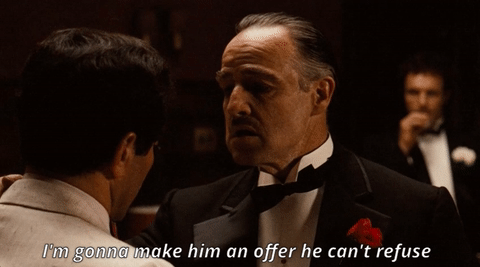
Fontane’s here for another favor from Vito, as he wants a part in a movie to repair his ailing career. He starts to cry, Vito shouts some iconic toxic masculinity, and then says that line. You know, “I’m gonna make him an offer he can’t refuse.” Yeah, the most iconic line of the film. He sends along adopted son and lawyer Tom Hagen (Robert Duvall) to enact that favor for him the following day, then FINALLY goes to his daughter’s wedding. Poor dude.
Indeed, Hagen goes to Hollywood and speaks with film producer Jack Woltz (John Marley), who spits an impressive litany of racist phrases before learning that Hagen works for Corleone. Woltz calms down a bit and invites Hagen over for dinner, and to see his prized...horses. Oh. Oh, shit.

Yeah, this is the problem with watching an extremely iconic and acclaimed film from 52 years ago: you know all the references. The Godfather is one of those movies that’s sort of permeated media almost universally, so...yeah, I get it, I know exactly what’s about to happen here.
See, despite Woltz understanding the power that Hagen represents, he still refuses to give Fontane the part. Why? Because he hates Fontane for stealing away a woman from his production company (and possibly from his bed). So, yeah, he says no. And how does Corleone respond to this refusal? He makes him an offer he can’t refuse...and creates the second of this film’s famous sequences (with the cold open being the first scene).
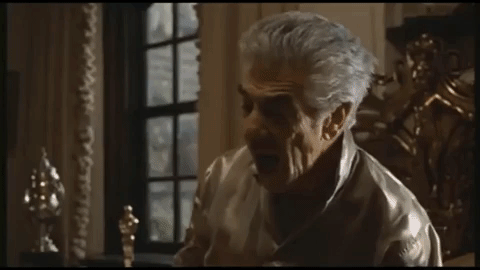
Damn, that poor horse.
Fast forward to Christmastime! Next matter of business: dealing with Sollozzo (Al Lettieri), a rival and heroin dealer backed by a rival crime family. Hagen advises that it’s time for the Corleone family to get into a new business: drugs. And so, Vito meets with Sollozzo, who offers $1 million to get into the business. But Vito refuses the offer, and instead goes to speak with Luca, asking him to speak with the rival family to find out what he can about Sollozzo. And Brasi attempts to do exactly that...only to be brutally murdered by the Sollozzo and the Tartaglias. FUCK.

Things now immediately escalate. Hagen is kidnapped, and what’s worse, Vito Corleone is shot multiple times in the street WAIT WAIT WHAT THE FUCK JUST HAPPENED HOLY SHIT

Um. Jesus. That escalated impossibly quick. The family is alerted, and it’s unknown whether or not Vito survived. Meanwhile, Sollozzo calls Vito’s son, Sonny (James Caan), and tells him that they’ve got Hagen. This whole thing is because Vito refused the deal, and Sollozzo thinks that the right move is to ask Sonny to make the right choice...after she had his father shot. Yeah, uh, Sollozzo, that’s an incredibly stupid plan, because they’re gonna fucking MURDER you SO HARD.

It’s even worse for him, since it’s revealed that Vito actually survived FIVE SHOTS TO THE BACK. Sollozzo really needs Hagen to make that deal for him, and he manages to convince Hagen to get Sonny to make the deal. As the sons (save Fredo) try to decide what to do in the case of Vito’s death, they get a delivery of fish. Which means, apparently, that Luca Brasi’s dead.
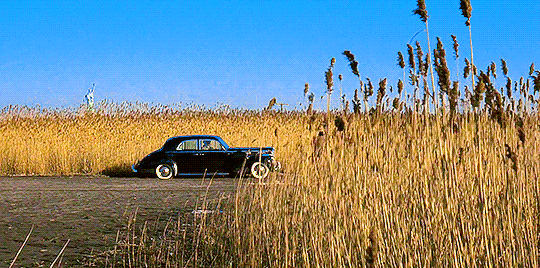
The next day, Vito’s captain Clemenza (Richard Castellano) takes out a bodyguard that was meant to guard Vito, as they suspect him of being a traitor to the don. And I recognize yet another famous scene, in which a hitman kills the bodyguard, then tells him to “take the gun and leave the cannoli.” Again, classic.

Mike, who is initially not supposed to be involved in his father’s business, goes to visit him in the hospital as he heals. But there are no guards or cops present, as there should be. Suspecting an attempt on his father’s life, Mike gets a nurse to hide him, JUST as a “visitor” comes to deliver flowers to him. Looks like the visitor is actually legit, though, as it’s the COPS who were paid off by Sollozzo. Captain McCluskey (Sterling Hayden) comes, planning to arrest Michael for interfering. Hagen intervenes just before then, likely saving both Michael AND Vito.

The next day, Sonny’s out for blood. He’s gunning for the Five Families, now, having taken out one of the Tattaglias that killed Luca Brasi. With this whole affair, Mike is now interested in being a part of taking out the dirty cop and Sollozzo in one shot. They’ve expressed interest in meeting him, and he decides to take the opportunity to kill both men at a dinner. While Sonny and Hagen doubt he can do it, Clemenza makes sure he’s ready. Mike’s getting indoctrinated into the family.
The meeting is set up, and Sonny, Hagen, Clemenza, Mike, and caporegime Tessio (Abe Vigoda) plot to meet at a dinner that night. They pick him up, and manage to shake any tails from Corleone’s men, but still head to the agreed upon restaurant. The two talk in Italian, while the police captain eats his veal. I’d give you the translation, but I love the fact that the film doesn’t; I had to look it up out of curiosity. But it doesn’t matter for long. Michael gets a gun from the bathroom, and he kills them both. Looks like he’s part of the gang now. And with that...a gang war begins.
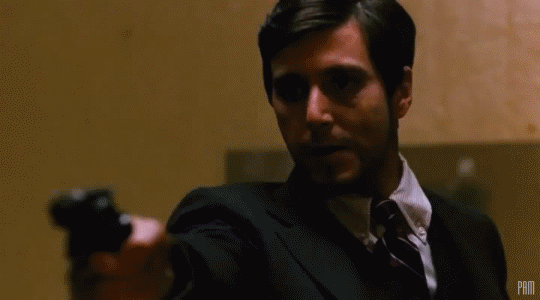
Back to the old formula! See you in Part II!
#the godfather#the godfather 1972#francis ford coppola#mario puzo#marlon brando#al pacino#james caan#richard castellano#robert duvall#diane keaton#abe vigoda#vito corleone#corleone#crime film#crime movie#31 films to life#31 to life#365days365movies#user365#userpayton
10 notes
·
View notes
Text
Horror October II: Frankenstein (1931) - Recap: Part Two
Hollywood Legend time!
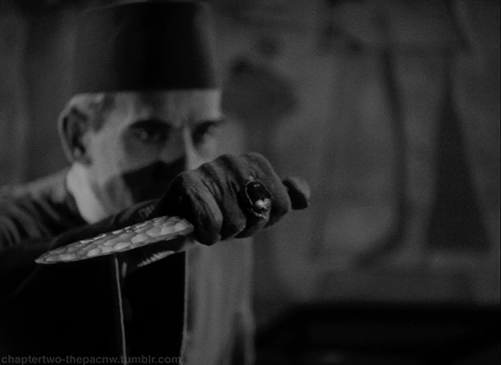
Born in Surrey, England in 1887, William Henry Pratt was born to two parents with ancestry from the subcontinent of India, leading to him growing up with a darker complexion than that of his compatriots. His great aunt was Anna Leonowens, AKA the woman who inspired The King and I. Yeah, THAT The King and I!

But despite this impressive connection, Pratt didn’t have a great childhood. Bow-legged, with a lisp and a stutter, and already an outside to his peers. And when he was very young, his mother passed away, leading to him being mostly raised by his eight siblings. Like I said, rough time of it. But things got better when Pratt stumbled upon a new profession: acting. And so, in 1911, Pratt moved to Canada and started in on stage performances. While there, he came up with a stage name. Boris Karloff is born.
Karloff transitions into film pretty quickly, and is in silent films for a while, often cast in minority roles due to his unique appearance. But then, in 1931, after dozens of bit parts, he’s found by director James Whale, who wants him to play the Monster in his upcoming adaptation of Frankenstein. Karloff obviously accepts, puts on his four-inch platforms and big-ass costume, and film history is made. Karloff’s a star!

He’s cast as the mummy Imhotep in 1932′s The Mummy, all the while appearing in horror film after horror film. The Mask of Fu Manchi, The Old Dark House, The Raven, The Black Cat, Bride of Frankenstein. He also meets Bela Lugosi, his rival as Hollywood’s big horror film star. We’ll get to Lugosi eventually.
Role after role after role, sometimes returning as the Monster, Karloff’s star is more than cemented. His voice, performance, and image become synonymous with the Monster, and they will NEVER be separated. Dude’s turn as the Monster is one of the most enduring and famous roles in all of film history, and it’s completely pervaded culture across the world. Which is, of course, despite the fact that it’s COMPLETELY inaccurate to the book’s depiction, but whatever.
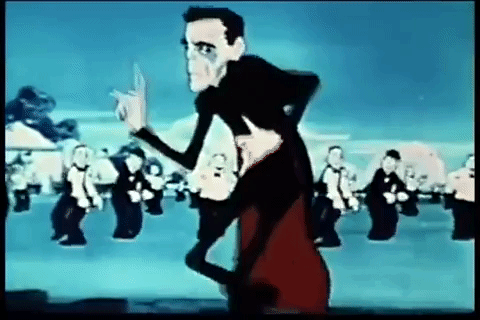
It’s hard to fully describe how iconic Karloff really was, and remains to this day. But he also did some other stuff to note. He continued to appear in film and television through the 1960s. Got married 6 times, and only had one child. He had a popular children’s radio show throughout the 1950s, where he told riddles and read stories. Dude dressed up as Santa Claus ever Christmas since 1940 to give gifts to disabled kids in Baltimore. He was a strong representative for actor’s rights, and a major member of both the Screen Actors Guild, and the Hollywood Cricket Club. Do...do I love Boris Karloff?
Karloff was a big smoker throughout his life, and it eventually caught up to him, eventually leaving him with only one function lung. In 1969, he died of pneumonia at the age of 81. This birth home was memorialized by an English Heritage blue plaque, and his legacy is never-ending to this day.

And with that, let’s jump back into the movie!
SPOILERS AHEAD!!! Check out Part One here!
Recap: Part Two
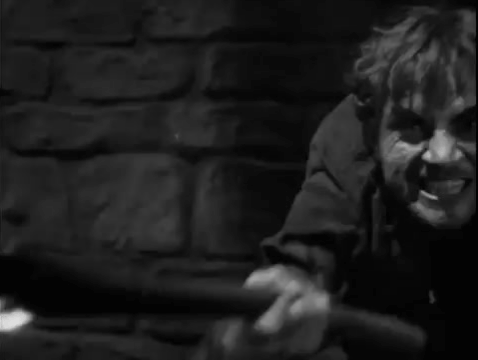
Fuck you, Fritz.
Seriously, this asshole immediately decides to antagonize the Monster with his torch, freaking him out nd making him attack IN SELF-DEFENSE. That, in turn, forces Henry and Waldman to knock the Monster out and chain him up in another part of the castle.
And even then, Fritz fucks with him even further, fending off with the fire and whipping him! And wait, the reason he hates fire is because it reminds the Monster of this abuse? Fuck this dude, man! One of these days, the Monster’s gonna sna-oh never mind, Fritz is dead, the Monster killed him. Well, dude kinda brought it on himself.
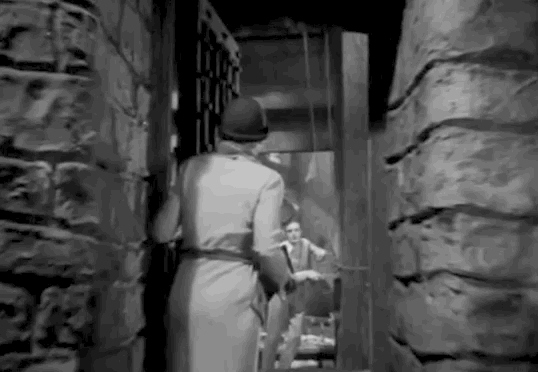
They try to subdue the Monster again, but now he turns against Henry, strangling him until near unconsciousness. Just then, the Baron shows up, demanding to figure out what the fuck is going on. They find Henry, having made his way out of the whole situation with some well-placed injections, and he stumbles off to greet his father.
At this point, some of the gambit is up. Henry relents, and agrees to calm down just long enough to get married, especially now that the monster is safely confined away. So, the wedding takes place, and we catch up with the rest of the people nearby. A father and his daughter, Little Maria (Marilyn Harris), live in a cottage near a lake. Maria goes to pick flowers by the lake, and is unexpectedly joined by a new friend.

Yeah, Monster’s out of the castle. Whoops. The little girl is nice to him, and he accepts her kindness. She throws flowers into the lake, so that the petals float away. And the Monster also wants to play!

And, uh...Maria can’t swim. Fuck.
The Monster runs, only to find the wedding in town. Elizabeth expresses worry about the future, near and far, but Henry tries to allay her worry. Just then, Victor interrupts to tell them the Monster is approaching. Not just that, but he’s IN THE HOUSE! GASP! They run to find him, only for him to turn up...well...he wants to pay his dues to the bride.

Elizabeth faints, the Monster escapes, and at the same time, Maria’s father enters the village, carrying her body. And I gotta say, it’s a heartbreaking scene. He’s here to get justice for his daughter, as he (correctly) believes the Monster killed her. And a dead child means one thing, and one thing only.
PITCHFORK AND TORCH TIME BABY

The mob, led by Frankenstein, heads up into the mountains, where the Monster has fled. But eventually, only the good doctor is on his creation’s trail. But the Monster is learning, and lies in wait for his creator. And what’s worse, he’s no longer afraid of fire. Henry’s fucked.

The Monster easily overcomes Henry, and drags him to the abandoned windmill atop the hill nearby. The mob hears Henry’s cries for help, and they follow in literal hot pursuit. Henry wakes up, and the two struggle once more, only for the Monster to throw Henry off the roof of the windmill, almost killing him.
And now, another of the most iconic scenes in film history: the burning of the windmill.
youtube
The windmill is caught alight, and the Monster burns. And then...cut to black. Turns out that Henry lived, and is under the care of his new wife and the Baron. The Baron gets some booze from a couple maids, then makes a toast to a grandson and...the movie ends.

...Huh. Abrupt. Like, weirdly abrupt.
I mean, did I love this movie? Yeah, absolutely, genuinely a fantastic film and a timeless classic. But the ending and pacing are...odd. Y’know what, hold on. Let’s break it down.

Cast and Acting: 8/10
First things first here: Boris Karloff is goddamn fantastic, and I understand exactly why he was thrust into stardom after this film. For having literally NO DIALOGUE, he is far and away the most memorable part of this film. The scene where he holds up his hands and gazes skyward, as if to touch the light itself? Fuckin’ gorgeously acted and shot, and I love Karloff immediately. And for everybody else? They were fine, but...I dunno, hokey, sometimes? Colin Clive is probably the best of the rest, followed closely by Mae Clarke and Edward van Sloan. John Boles definitely, uh...exists? And as much as I love Dwight Frye, his overacting of Fritz is a little much a lot of the time. But WORST of these guys is Frederick Kerr, who’s in a different movie entirely. None of them are actually bad, none of them, but they just pale in comparison to the Monster himself.

Plot and Writing: 7/10:
Look...I love Mary Shelley’s Frankenstein, in case you couldn’t tell. And ALSO in case you couldn’t tell, this movie is NOTHING like the book on which it’s based. Like...almost completely different. Now, to be completely fair, writers Garrett Fort, Francis Edward Faragoh, Robert Florey, John Russell, and John L. Balderston (Yeah. Five writers.) was actually based on a 1927 play by Peggy Webling. She's the one who called Frankenstein Henry instead of Victor; she gave the Monster the name “Frankenstein”, after it’s creator; and she brings in Baron Frankenstein as a comic relief character, amongst a few more major changes. Balderston apparently hated the play, then adapted it to his liking. And those plays became this film. And...yeah, it’s not as good as the book. Sorry! It’s still good, don’t get me wrong! But it removes SO MUCH of the dark pathos of the original story, that it neuters it completely. Most of the characters in this story are DEAD by the end, and yet “Henry Frankenstein” gets a happy fucking ending, WITH HIS LIVING WIFE? IT’S A STORY ABOUT A ZEALOUS CREATOR DESTROYED BY HIS CREATION!!! THAT’S THE ENTIRE GODDAMN POINT OF THE BOOK!!!
But is it bad? No, not really. It’s just...frustratingly different.

Direction and Cinematography: 10/10
And yet, at the same goddamn time,
James Whale
and cinematographer
Arthur Edeson
knock it out of the PARK. This movie looks fantastic, and needs to be lauded for its direction and cinematography. Is it a film from 1931? yeah, obviously, but it’s a GREAT film from 1931. Whale wasn’t originally attached to the project, but was brought in by Universal after their original star Bela Lugosi took the fuck off. That’s a whole other topic, I’ll get into it. And he did
spectacular
on this film, I can’t praise it enough. Angles, camera focus, long shots, panning shots, just so many well-framed scenes, it’s...it’s gorgeous.

Production and Art Design: 10/10
And not just in terms of the camera, but also in terms of the sets and production design. Again, is it a 1931 film? Absolutely, But it looks great! Even Frankenstein’s Monster, despite how markedly different he is from the books, looks great here, and the look is iconic to this day. Well-produced, well-designed, and with a budget of only $4,303,661.09 in 2021 money. Which, for a massive studio-funded film, is CHEAP. Great looking movie, is what I’m saying.

Music and Editing: 8/10
That applies to the music, too. Bernhard Kaun’s score is sweeping and wonderful throughout the film. But, uh...the editing isn’t great. Not really talking about the sound editing, since the film was made in 1931. But the actual film editing by Clarence Kolster and Maurice Pivar is...comething to be desired sometimes. And yeah, this is about the pacing issues. Because that ending was SO GODDAMN ABRUPT, it genuinely hurts me. It’s a 71 minute film, and it’s not exactly meant to be protracted longer than that, but it’s got some poor pacing in there that could’ve been fixed by sharper editing, I think. Again, definitely not bad...just not perfect.

86% is a great score, but it fells...I don’t know, wrong?
This movie has a 100% on Rotten Tomatoes, with an average weighted score of...86.7%? Huh. I guess I’m not alone, then. This film is a classic, and it’s VERY good. And if you haven’t seen it, DEFINITELY watch it. Very fitting for this time of year. But it definitely isn’t perfect.
However...I still loved this movie, and Imma watch it every year. Yeah, really! it’s just that good! In fact, I know that I have a lot of movies on my watchlist for this month, but...well, dammit, I’m really feeling the Universal Monster movies. And so, I think I know EXACTLY what’s coming next. But first, I’m gonna get a drink. Feeling parched for whatever reason.

Next: Dracula (1931); dir. Tod Browning
#user365#365days365movies#365moviechallenge#horror#horror october#horror films#horror genre#frankenstein#frankenstein's monster#mary shelley#james whale#boris karloff#colin clive#mae clarke#the modern prometheus#usersasha#classichorrorblog#userdestry
33 notes
·
View notes
Text
Music December III: My Fair Lady (1964) - Recap: Part One
Talking about musical theatre? Gotta go to the Greeks.

The modern Western style of theatre has its roots in ancient Greece, around the 500s or so. It’s where we get names like Aeschylus and Aristophanes and Thespis and all them guys. Performance was the preferred Greek method of telling tales, along with oration. And between the two, acting out a story automatically makes it more memorable and engaging, right?
But the stories told by the culture go back even further, told as mythology since God knows when. Over time, though, those stories were recorded into written word by poets. The Greeks had people like Homer, and their mythologies were eventually passed onto (read: basically straight-up stolen by) the Romans. They also had various famous poets, most notably Ovid. And in his 15-book epic (beat that, fanfic writers. I mean, actually beat that, I believe in you), he detailed multiple myths in Greek and Roman mythology. One of the Greek ones spoke of a sculptor named Pygmalion.

Let’s get something clear first: Pygmalion was an ass.
He was a sculptor who saw sex-workers this one time and immediately hated all women as a result. He’s basically an ancient Greek incel, who chooses to stay celibate as to not be around those gross, sinful, flawed women. Instead, he resolves to make his own perfect woman, out of pure ivory. He makes a sculpture of a beautiful woman, and immediately falls in love with it. Like an American otaku who collects way too many, uh...figurines. Like those figurines. That’s essentially Pygmalion.
And I mean it, dude falls in love with the statue. It’s Greek mythology, that kind of stuff is bound to happen. He makes it a bed, he gives it gifts, he makes out with it and caresses it. You know, normal stuff. But obviously, the statue can’t respond or react to this. So, he resigns to his objectophilia and sinks into intense depression.
And that’s when Aphrodite enters the chat.

Aphrodite is from the same island that Pygmalion was from, so she was always paying attention to the place. And when she see this weird-ass passion, she was intrigued. Pygmalion prayed that he could find a real woman like this statue, and Aphrodite granted his wish, in sort of a reverse monkey’s paw. See, instead of giving him a woman like the statue, she just brought the goddamn statue to life, and named her Galatea. They fell in love, got married, had a kid, and...that’s it. Yup.
Now, some of you might be thinking, “I’ve definitely heard this story before. And you’re probably right, but we’ll get to that in a minute. The rest of you are probably thinking, “That seems like some sexist bullshit.” And, yeah, the story of a man literally objectifying all women, and then having a loving relationship with that object...yeah, that’s pretty goddamn sexist, not gonna lie. Still hasn’t stopped it from being adapted...a LOT.
Let’s start with the obvious.
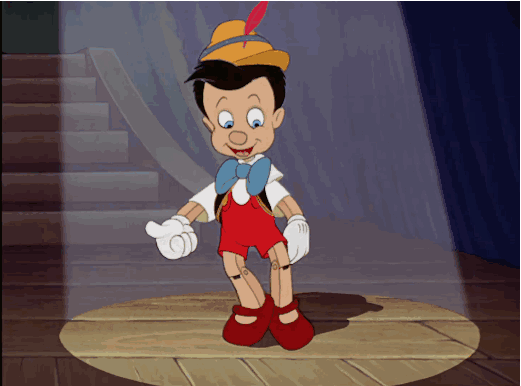
Maybe the most famous example of an inanimate human-shaped object being brought to life by love and magic is Pinocchio by Carlo Collodi. Of course, that story is very different from the story of Pygmalion, but...come on. The trope is literally the same idea. Granted, in the original book, it’s the creation that wishes to become a real boy, for the sake of its creator. It’s still extremely similar.
But fine, if you want a straight adaptation of the story, there’s no short supply. The story’s been adapted, referenced, and reinterpreted since Shakespeare. And even he referenced the story in A Winter’s Tale and Measure for Measure. Looking through a list of adaptations gives you a who’s who of authors. Shakespeare, Beddoes, Bell Scott, Tennyson (but not that one), Brodsky, Hawthorne, Updike, Lovecraft (yes, that one), Asimov, Rousseau, and Wharton. Hell, DC Comics has used the idea 3 separate times! Wonder Woman is literally a clay sculpture brought to life with love from her creator and the gods. Grant Morrison made a villainous Pygmalion in the form of Professor Pyg, and the DC Animated Universe gave the name Galatea to a clone of Supergirl!

YOU SEE WHAT I MEAN?
This is a very popular story, is what I’m saying. And we’ve all heard or seen at least one variation of it. But the funny thing is, to see the most popular straight adaptation of the original story, you have to fast-forward to 1913 and famous Irish playwright George Bernard Shaw. While he can be credited with a lot of things, including the 1925 Nobel Peace Prize in Literature and a 1938 Oscar for Best Screenplay (BOTH of which he didn’t want), one of his most famous credits is the 1913 play, Pygmalion.
This story was already popular at this point, and a lot of playwrights and poets had turned their attentions to it one way or another. Shaw’s version modernized the story (as many people did at this point), but changed the subject of Pygmalion’s focus from a sculpture into...well, a living, breathing woman named Eliza Doolittle. Eliza was a flower girl, and was Cockney. If you don’t know, Cockney describes a working class Londoner with a very distinctive dialect and use of the English language. That “working class” thing isn’t as applicable today as it was in the 1910s, for the record.
Our Pygmalion of the evening is Professor Henry Higgins, an uptight phonetics teacher who takes on the job of teaching Eliza to be a proper British lady, essentially as a bet just to show how awesome he is. So, yeah, he’s literally sculpting her into his ideal woman, and he does end up falling in love with her as a result. Also, yes, this concept will sound familiar to anyone who likes ‘90s teen comedies.

Yes, She’s All That is an adaptation of Shaw’s Pygmalion.
And no wonder, because this play is Shaw’s most popular, and it’s the version most people associate with the original myth! It was first adapted into film in 1935. In 1938, the British film Pygmalion got an Oscar for Best Screenplay. And then, in 1956, it made its way to the USA...as a musical. Because that’s what we do, what can I tell you?
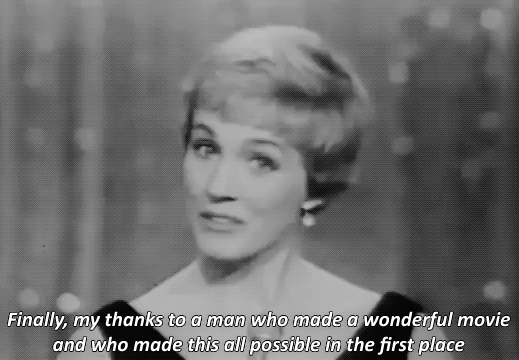
Dame Julie Andrews herself played the role of Eliza, while famous actor Rex Harrison played Higgins. And this was on stage, mind you. The play was written by Alan Lerner and Frederick Loewe, and debuted on Broadway in 1956. Unsurprisingly, the film was a smash hit, and won six Tony Awards including Best Musical. At the time, it was the longest running show on Broadway, and has had 15 runs over the years, with the last one being a USA tour in 2019! Popular play, is what I’m saying.
Sadly, Shaw wasn’t alive for any of this, as he died in 1950. Would he have liked to see his play become a smash musical? Well, he didn’t like it becoming a film, I’ll tell you that. So...maybe, maybe not. In any case, the train was running now, and the film adaptation was inevitable. It took 8 years, but Lerner’s screenplay and George Cukor‘s direction were brought onto the film adaptation of the musical adaptation of the literary adaptation of the Greek myth. For their Higgins, they chose the Broadway originator, Rex Harrison. And for Eliza? Well, of course, famous star of the silver screen...Audrey Hepburn?
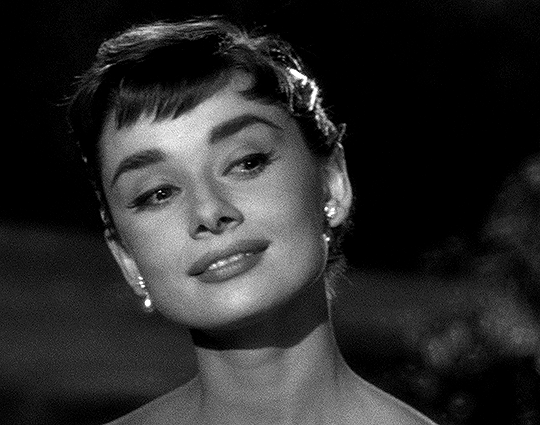
Yeah, despite not really being a Broadway actress or singer...AT ALL...the filmmakers cast Audrey Hepburn. And yeah, I know that Audrey was a ballet dancer, and she was a chorus girl in the West End for a little bit. I’m aware, but...Hepburn? Don’t get me wrong, Audrey Hepburn is fantastic, seriously. Grew up with her thanks to my Mom (she’s a huge fan), and watched her films later on in life, with this and a few more being exceptions. But she’s not really a singer, and definitely not on par with Andrews.
So why not bring in Julie Andrews. Get this: they thought she wasn’t famous enough. Which actually makes some sense, know that I’m looking at it. Sure, she was in a number of films at that point, and she was known within musical and acting circles. But she hadn’t broken out as a star as of yet. Funny thing is, ONE MONTH before My Fair Lady came out in theatres...

There is, within the infinite multiverse, an alternate universe in which Julie Andrews was in My Fair Lady, and Audrey Hepburn was Mary Poppins. THINK about that shit.
Anyway, despite that, My Fair Lady is, to be this day, considered one of the best movie musicals ever made. And I haven’t seen it. What’s more, even though I know the basic plot, I actually know none of the songs from this one. Sure, I’ve heard of some of them, but I don’t really know any of them like I did with Singin’ in the Rain or The King and I. So, this is exciting! New fresh musical ground for me!
And with ALL of that said, enough navel gazing! Let’s get into it!
SPOILERS AHEAD!!!
Recap: Part One
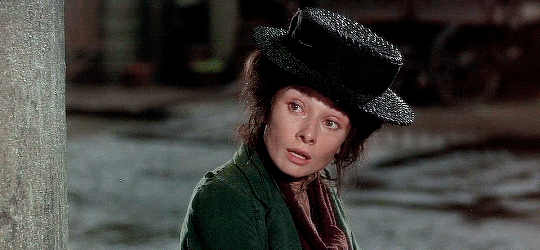
After an flowery instrumental introduction and opening credits, we find ourselves in the midst of high society as a party files out into the rain-drenched streets of London. In the chaos, gentleman Freddy Eynsford-Hill (Jeremy Brett) bumps into Cockney flower girl Eliza Doolittle (Audrey Hepburn), causing her to spill her flowers. She demands payment, and speaks in a yowling, high-pitched, Cockney accent which is...genuinely annoying, not gonna lie.
A fellow person on the streets warns her that a man is taking notes as she speaks. She obviously thinks this is a detective, and starts freaking the fuck out about it. Again, understandable; I’d freak out if somebody were taking notes about what I was saying. Turns out, though, that this man is Professor Henry Higgins (Rex Harrison), who’s writing her dialects down as a matter of record. He is, after all, a scholar of phonetics, the “science of speech”, and he proves it by Sherlock Holmesing everybody’s place of origin based on their accent. He should try that shit on me; my American accent is so undefinable, it’s near impossible to tell where I’m from.

When asked to explain, he takes the opportunity to lambast Eliza’s use of the English language, as well as any other use of the language outside of his own type of usage (“Why Can’t the English Learn to Speak”). Yeah, Higgins, is SUPER elitist in terms of language usage. And while he might be verbose, he’s also an ass. Again, this is our Pygmalion of the evening. After his insult-laden song, he lays down this gem for Eliza.
Yes, you squashed cabbage leaf, you disgrace to the noble architecture of these columns, you incarnate insult to the English language, I could pass you off as the Queen of Sheba!
This speech and that insult catches the attention of Colonel Hugh Pickering (Wilfrid Hyde-White), a student of phonetics himself. Intrigued by Higgins’ idea that language is the actual division between classes (instead of, you know, unequal economic distribution), the two strike up a conversation. Turns out that Pickering is a student of the languages of India, and was coming to England to see Higgins, while Higgins was planning to go to India to see Pickering! They take off to go make out somewhere or something.

As they leave, Higgins gives money to her, mostly as a half-gesture. But it launches her and her fellows into talking about their ideal lives, and the things they’d like most (“Wouldn’t it be Loverly?”). And that song, of course, is one of the more well-known songs from this musical. It’s a cute song and dance, and then the night becomes morning. In the process, we get a fascinating shot that looks ripped right off the stage, as the people of the town filter in bit-by-bit, pausing in stages until they all move together, in a busy crowd. Honestly, I like it quite a lot.
Eliza’s father, Alfred P. Doolittle (Stanley Doolittle), a drunkard and deadbeat, comes around asking for some money, and Eliza reluctantly gives him a bit before thinking about that sick-ass insult Higgins gave. She has an idea, then uses the money to get a cab and head to Higgins’ offices. He’s playing with phonographs while talking with Pickering when Eliza is brought in by housekeeper Mrs. Pearce (Mona Washbourne).
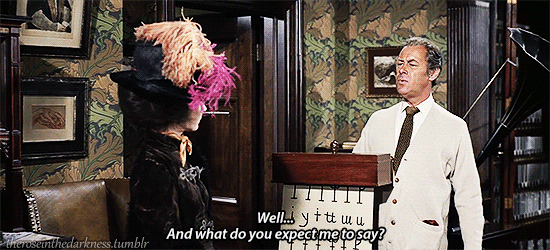
While initially incensed at her presence, Pickering offers to cover to costs of the lesson, as he’s curious to see if Higgins actually could have her pose as a Duchess. After...a lot of really annoying screaming from Eliza and condescending folderol from Higgins, the deal is set. Higgins will, over the course of the next six months, essentially train her to act and speak as a proper lady. Under some protest, she agrees...but only after he promises her a fuckton of chocolate. I get it.

Mrs. Pearce and her fellow waitstaff go upstairs to give her a bath. By force. Eliza screams. My girlfriend completely gives up on the movie, and goddamn, I kinda get it. But I’m here to stick with it, so I do. Speaking of girlfriends, Pickering plays good cop (as he has been, to his credit) and asks Higgins of his intentions with the vulnerable young woman suddenly living in his house. And that’s when Higgins launches into “I’m an Ordinary Man”, a song specifically about hating women. And yeah, dude definitely hates women, and pledges to never let a woman in his life alongside super-misogynistic references aplenty. Which, yeah, is the point of the character.

Right after that, though, we get another song from Alfred Doolittle, detailing the lifestyle of a man who cheats on his wife, constantly sleeps around, and mooches off of his daughter (“With a Little Bit of Luck”). Yup. He’s a piece of shit. Very fun song, though. In the process, he learns from another woman on the streets that Eliza no longer lives in her residence, having moved in with Higgins. And that’s the signal to go a-moochin’ for old Alfred.
At the Higgins residence, Eliza’s being worked constantly, which is why the housekeeper is worried about...Higgins overworking himself. Um. OK, whatever, she doesn’t really have an attachment to Eliza yet. Alfred then comes a-knocking, demanding...something. The two men talk around each other, but Alfred eventually just straight-up asks for money. Basically, he’s selling Eliza to Higgins for 5 bucks, thinking that she’s acting as a sex worker for Higgins.

...There are no likeable people in this film.
Well, Pickering’s likeable at least. Higgins is weirdly charmed by Alfred’s complete lack of morals and convictions, and gives him the requested money. Alfred and Eliza meet for a hot second, then Higgins goes on to tell her to practice her vowels. Pickering tries to prompt patience from Higgins, proving himself as the only likeable character so far.

Eliza’s fed up with Higgins, and fantasizes about her revenge on him, in what is...a genuinely entertaining sequence that starts to win me over (“Just You Wait"). The lessons continue, while the...ridiculously large waitstaff seems to pity...Higgins (”Servant’s Chorus”). Apparently, he’s working himself too hard, even though we literally see him starving Eliza. They’re also so very annoyed at the lessons themselves, and are on the verge of quitting. Also, Jesus, how many people does this man employ?

The lessons continue, with little success and with weird methods. There’s one scene where Higgins makes Eliza say a sentence with marbles in her mouth, and I was SO CURIOUS, I SHIT YOU NOT, that I tried it myself, using marshmallows instead of marbles. Because I don’t have marbles. But, yeah, it actually did make me more mindful for how I was enunciating. Also, I had marshmallows.
But then, one night, after many days and nights of working, and after Higgins waxes poetic about the nature of the English language...Eliza just miraculously gets it. Like...instantly and perfectly (“The Rain in Spain”). The breakthrough delights the trio so much that they begin dancing and singing all over the place. Higgins reacts by deciding to publicly “debut” her at the races the following day. Eliza reacts by...well, singing. It is a musical.

As Mrs. Pearce and the maids are trying to get her to bed, she sings...wait. “I Could’ve Danced All Night” comes from this musical? Literally, the only lines I knew from that song are literally in the title, but I’ve heard of the song. Interesting with context, gotta say. Eventually, though, Eliza goes to bed, exhausted. The next day opens with...my favorite sequence in the film.

Again clearly ripped right off the stages of Broadway, “Ascot Gavotte” is a beautiful set piece, full of ridiculous gowns and hats. And I genuinely love the entire sequence. Until the plot kicks in. Funny thing about me, I am violently allergic to what the kids once called “cringe”. It hurts me to watch shit like Eliza immediately making a fool out of herself at the races with the elite. But even then, gotta say, Eliza’s iconic gown is absolutely gorgeous. Like, look at that fucking HAT! I love it.

One of these “elite”, by the way, is Mrs. Higgins (Gladys Cooper), Henry’s mother, who is not excited to see him. She allows him, Pickering, and Eliza into her box to watch the race. She starts to talk about less-than-classy things in her new high-bred accent, and then...well, a hilarious thing happens.
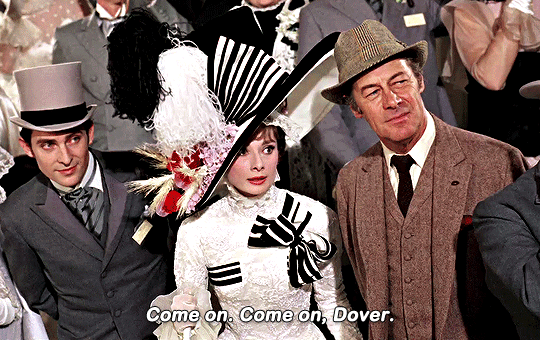

Great place to pause. See you in Part Two!
#my fair lady#film:my fair lady#my fair lady 1964#george cukor#audrey hepburn#rex harrison#stanley holloway#wilfrid hyde-white#gladys cooper#jeremy brett#movie musical#musical film#musical december#musicember#user365#365days365movies#365 movie challenge#queenmarissa#filmgifs#userbrenda#yocalio#usercandy
16 notes
·
View notes
Text
Horror October III: Dracula (1931) - Review
By the way, this isn’t the first film adaptation of Dracula.

The first is actually a 1921 Hungarian silent film called Dracula’s Death (Drakula halála), which is considered somewhat lost today. The second adaptation, and the far more famous one, is F. W. Murnau’s 1922 silent classic Nosferatu, seen above. This is a loose but accurate adaptation, starring no characters from the original film. However, it’s still well-regarded...and I also haven’t seen this one. I AM WORKING ON IT
Anyway, Dracula has been adapted countless times in film and stage adaptations, and the character is truly timeless. Of course, Bela Lugosi’s version of the vampire count reigns supreme to this day, but the character’s been played by Christopher Plummer and Gary Oldman, he’s fought both Batman and the Avengers, and he’s the second most adapted character in film to this day.

And with that...what’d I think of Universal’s version? Well...
Review
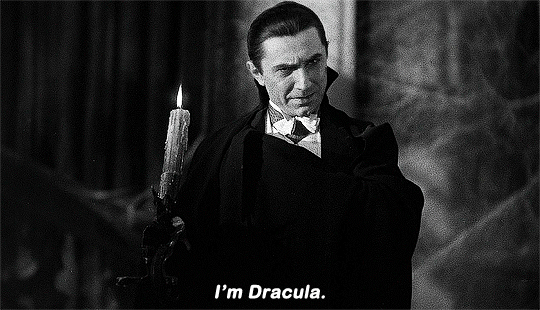
Cast and Acting: 9/10
Once again, first things first: Bela Lugosi absolutely rules in this movie. His turn as the charismatic Count is great, and his turn on the role is extremely iconic for a reason. But unlike in Frankenstein, I don’t really think there are any slouches here! Dwight Frye as Renfield is genuinely my other favorite character in this movie, and Edward Van Sloan’s Van Helsing is a powerful foe to the good Count. And Helen Chandler! WhoO! Sure, she’s a little over-dramatic at times, but she REALLY uses the seductive angle of the vampire to full effect as she’s beginning to turn. She’s very effective! If anyone was a weak point, it’s David Manners and Herbert Bunston, both of whom are...OK. They’re the straight men of the piece, and they’re fine in their roles. Seriously, compared to Frankenstein, these are some strong-ass performances all around.
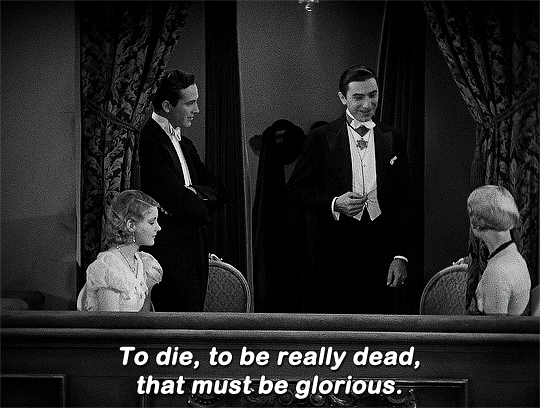
Plot and Writing: 9/10
Unlike Frankenstein, I don’t have a dog in this fight, adaptation-wise. And so, I’m measuring the writing and plot on their own merits. And honestly...kudos to Garrett Fort for this adaptation, because I think he did rather well! The movie seemed streamlined in plot, and it made sense all throughout. There are two major issues I had with it, though. One, the ending, of course. We’ll get to that with pacing, but this was a REALLY abrupt and unsatisfying ending for me. And two, honestly, the comic relief characters. Yeah, I didn’t mention them much, but the guard and nurse really took me out of the whole deal. Really didn’t need to be thrown in there, in my opinion. Other than that, though, it’s entirely solid.

Direction and Cinematography: 9/10
Tod Browning did really well with this movie...but I don’t know if I can say he did better than Whaley, honestly. Cinematographer Karl Freund I think matched up, but Browning didn’t make as much of an impact on me as Whaley did with Frankenstein. I dunno, it just didn’t affect me as much. Still great, but not as memorable for me. Close-up shots and lighting were still great, though. Speaking of...

Production and Art Design: 10/10
Production and art design DEFINITELY match up to Frankenstein, if not surpassing it. To really pull off Dracula, dude and his surroundings have to be grand and bold. And they certainly pulled that off, from his original home in Romania, to the surroundings and trappings of England. This movie looks gothic and dark, and that’s the perfect look for this story.
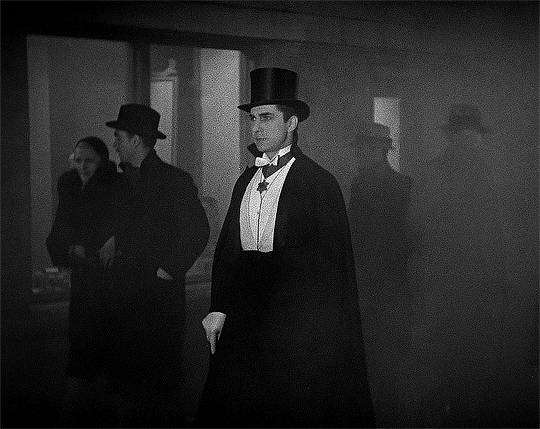
Music and Editing: 8/10
Well...this movie HAS no music. Yeah, outside of Swan Lake in the opening titles and the opera scene, there’s no music in this film. So, OK, what about the editing by Milton Carruth and Maurice Pivar? It’s great, but noticeable in some instances where it shouldn’t be. Still good, but not perfect.

90% definitely works for me. Love this movie.
This is yet another annual tradition established for me! Loving these Universal monster movies, and I want to keep watching them...possibly past October. Yeah, uh...we’ll see. Might actually continue this past October, because I can (and I want to). If anyone has objections, let me know. Anyway, what’s next? Feeling some more movie monsters, honestly. We’ve got vampires and Frankenstein’s Monster, so logically...
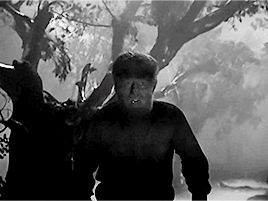
Next: The Wolf Man (1941); dir. Tod Browning
#dracula#dracula 1931#film:dracula#bram stoker#tod browning#bela lugosi#david manners#helen chandler#dwight frye#edward van sloan#horror#horror october#horror genre#horror movie#user365#365days365movies#365moviechallenge#useranimusvox#junkfooddaily#filmedit#useralexander#fireairshadow#classicfilmblr
18 notes
·
View notes